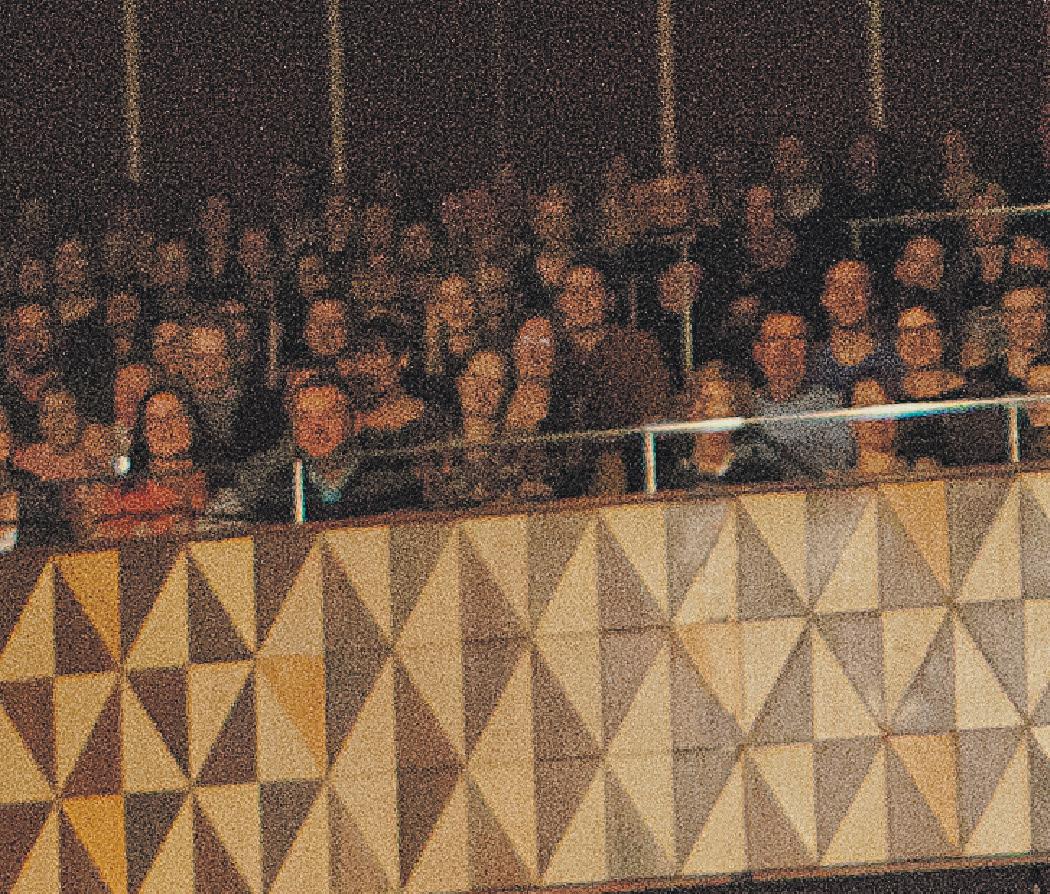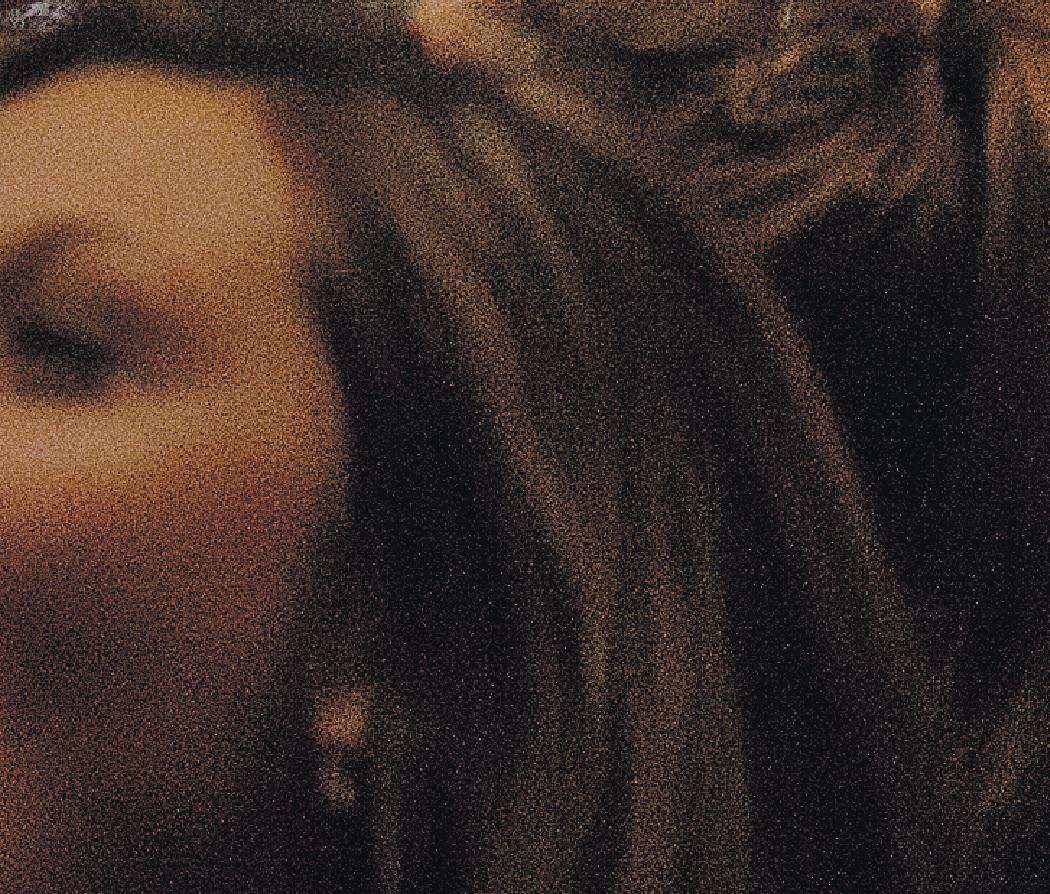RELOCATION WINTER 2022






Let me start by giving you all a warm welcome to the city of Copenhagen. We are honoured that you have chosen to relocate to our city. I hope we can fulfill your ambitions and wishes for your stay. We will try to do our very best to make you feel at home while you are here.

As mayor of employment and integration, it means a lot to me that we can attract talented people from all over the world. We need talent and we need people with ambitions to help us move forward. Our companies cannot develop the way they want to, and we cannot fulfill our true potential without the help of internationals.
We need your diversity to thrive! Back in 2002, a group of artists put up a bunch of posters on the streets of Copenhagen saying: “Foreigners, please don’t leave us alone with the Danes.”
For me, as a liberal, it is important that our society is open for all those who can contribute and are motivated to do so. And internationals have been an important part of the city’s development over the last few decades.
To find the best solutions in business as well as politics we need diversity, we need different perspectives, and we need
inspiration. I know that you have brought that with you in your suitcase, so do not hesitate to show your personality and background in everything you do while you are here.
We need more than ‘hygge’ A couple of weeks ago, I had the privilege of celebrating the graduation of 84 international students who had just completed our Greater Copenhagen Career Program – an initiative that will in the coming months be celebrating its 10th anniversary along with several other of our international career programs.
Because even though some fall for our ‘hygge’, or are charmed by the tiny streets of Copenhagen and its strong communities, we cannot rely fully on that being enough to stay in the long run, given the strong international competition.
We need to make it as attractive as possible for international students to stay after they are done studying, and that is why we try to teach them about effective resumes, cover letters and job interviews.
Meanwhile, we pair them with a mentor who has experience in the field the
students wish to work. The rate of success is impressive. Of those finishing in 2020 and 2021, 60 percent have found relevant full-time jobs.
I am proud of the effort we put into our job programs in co-operation with great partners, not least the job programs we have for spouses. We know that if a family is to thrive in a new city, every part of that family needs to be involved in our strong communities.
And we know that it is not always easy for a family to settle down in a completely different society. Especially for the children, it can be challenging to adapt to new surroundings. In Copenhagen, we have lots of leisure activities, and I encourage you to get you and your kids involved. It does not matter if it is sports, culture or hobbies.
We are all social beings, and we need to interact and connect with each other. And in Copenhagen there are plenty of possibilities to do so.
Warm welcome to cold CPH
While you read this, winter is arriving and, for some, it can be quite hard, as the thermometers fall down to zero and the
goes by quickly.
But do not worry too much! The sun will come back, and meanwhile you can use the opportunity to seek new adventures inside. It could be shopping, going to see a movie, or visiting a theatre. Copenhagen has a lot to offer and, when it gets cold outside, we try to find enjoyment indoors.
I wish you the best of luck in all your endeavours: here’s wishing you a warm welcome to cold Copenhagen!


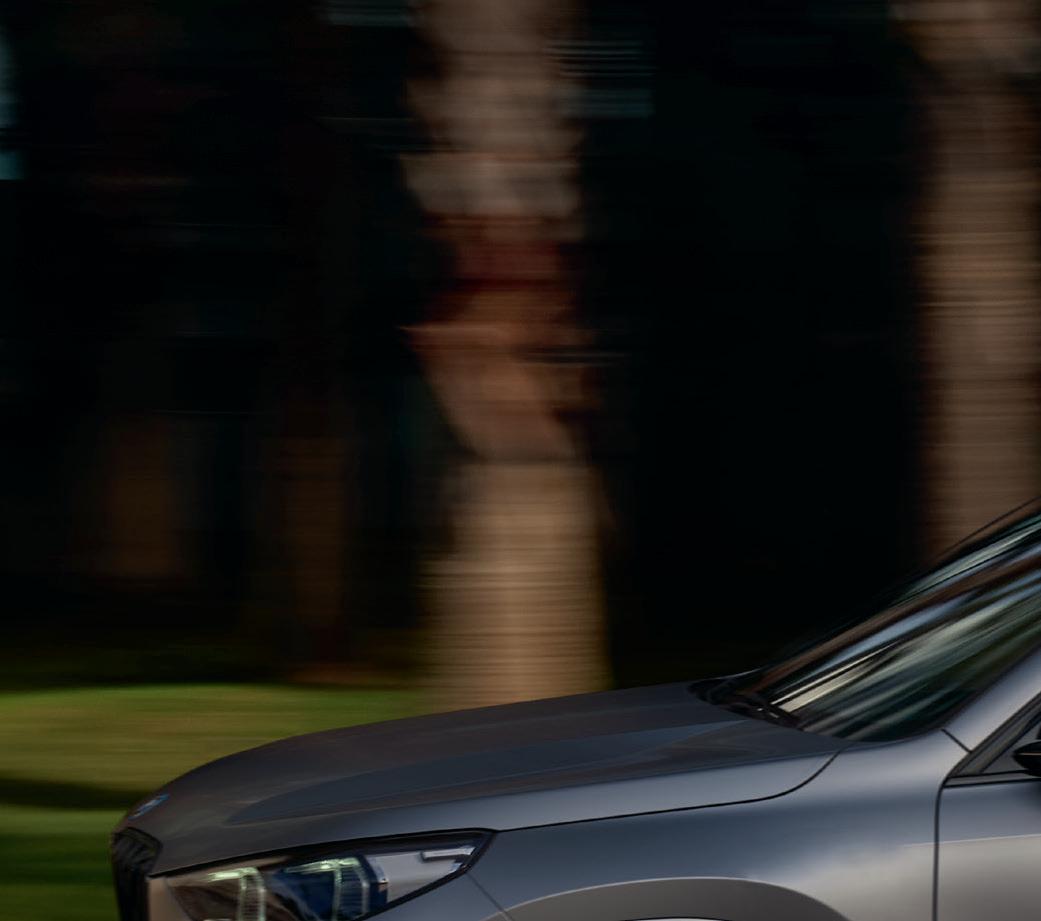
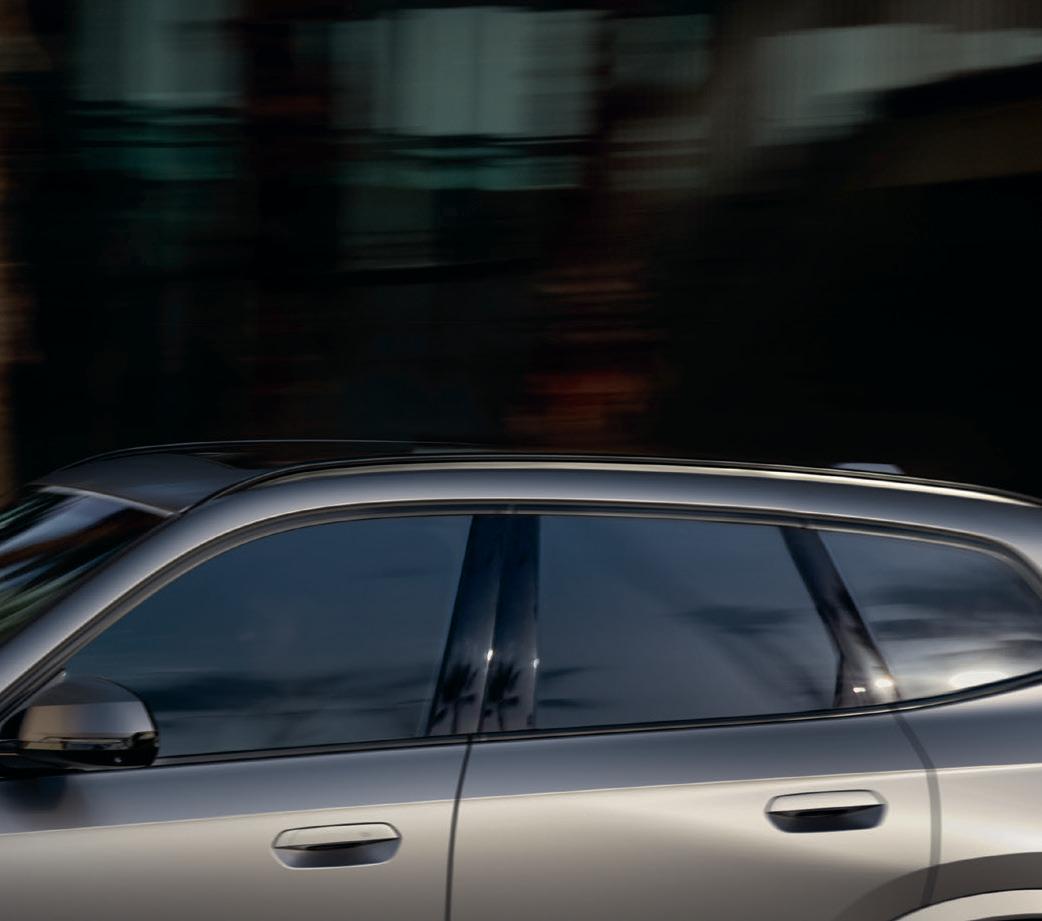



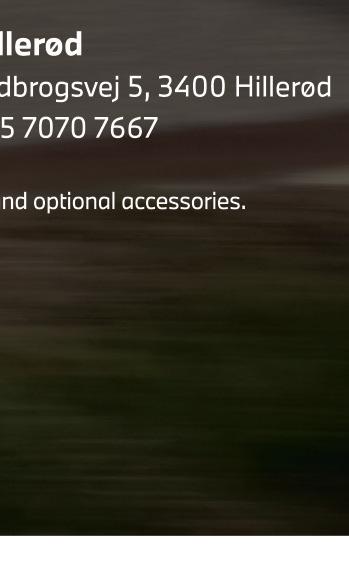

Whether you are well prepared or utterly clueless, here are some of the important first things to do when tackling relocation.
First things first! Do you have a CPRnumber? For most things in Denmark, you will need a CPR-number (Civil Registration Number). This is easy to obtain through the website or office of your local kommune (council).
In order to get one, you have to meet certain criteria: your stay in the country must last longer than 3 months; if you are an EU citizen, you have a registration certificate (does not apply to Nordic citizens); if you are a non-EU citizen, you have obtained a residence permit; and you have a place to live.
If you wish to stay in Denmark for longer than three months, you will need a residence permit. If you are not a citizen of a Nordic or EU country, you also need a work permit.
There is a fast-track scheme in place to enable certified companies to hire highly qualified foreign nationals at short notice without having to wait for an application to be processed by the Danish Agency for International Recruitment and Integration. The scheme also offers foreign nationals the option of working alternately in and out of Denmark.
English information on all this, and more, can be found on the ‘New To Denmark’ website: nyidanmark.dk
Setting Up A Bank Account
You will need a bank account in order to receive your salary and any payments made to you by the authorities, such as tax refunds. Danish law allows any person with a CPR-number to open a basic bank account. This will not include overdraft facilities, credit facilities or a debit card. These have to be agreed on with the bank individually.

EU rules stipulate that you will have to supply the bank with data such as your full name, address, and maybe other information, which has to be verifiable by the presentation of an identity document, preferably including a photo.
Another thing that everyone in Denmark needs is an Easy Account (Nemkonto) because all payments from public institutions (tax refunds, child subsidies, pensions, student loans, unemployment benefits, housing support and social welfare payments) are transferred directly to this account by default.
The easiest thing to do is to designate your basic bank account as your Easy Account. However, you can also open a specific separate account for this purpose. More information available here: nemkonto.dk/da/Servicemenu/Engelsk
Learning about Danish norms is crucial to understanding the social culture in Copenhagen. Denmark scores well in international polls on things as diverse as lack of corruption and happiness. It is also considered a safe and secure country to live in. Children often walk or cycle to school alone and crime rates against persons are low.
There is a high standard of living in Denmark and Danish society is very egalitarian, both economically and when it comes to gender equality. Taxes can seem very high to newcomers but they go towards providing a comprehensive cradle-to-grave welfare state and most people pay them willingly.
Among other things, the system is geared to providing child-care right from the start, and there are generous maternity and paternity leave allowances, which encourage women to return to the workplace after having children. Local councils are obliged to offer child-care places within the state regime and there are also private child-care options, which are heavily state-subsidised.
Education and medical treatment are free of charge although there are private clinics and private schools available, should you wish to use them.
Cycling is extremely popular with people of all ages and social classes, and Copenhagen alone has over 390 kms of designated bicycle lanes. About 55 percent of the locals bike to work and school. In a city like Copenhagen, a bike is often the quickest way of getting around – and there are no parking charges. There are more bikes than cars here: last year, the number of bikes reached higher than 265.000, while there were only about 252.000 cars in the city.
However, if you live too far from work to bike, or you just sweat like hell when you do it, you will need to make use of the Danish public transportation
system. In this case, buses, metros, and trains will likely be essential factors of adapting to life in Copenhagen. See page 10 for a comprehensive guide to public transportation.
Geography
Familiarising yourself with the Danish terrain and weather will help you better adjust to your new home. Denmark consists of the Jutland peninsula (which is attached to Germany) and a number of islands in the Baltic Sea. The largest of these are Zealand, on which the capital city Copenhagen is situated, and Funen.
The island of Bornholm is located east of the rest of the country. Many of the larger islands are connected by bridges: the Øresund Bridge connects Zealand with Sweden, the Great Belt Bridge connects Funen with Zealand and the Little Belt Bridge connects Jutland with Funen.
Area-wise, Denmark is a relatively small country (43,560 square kilometres) with a population slightly over 5.7 million people. Almost 2 million of them live in the four largest cities – Copenhagen, Aarhus, Odense and Aalborg – with Copenhagen having the largest population at 1.3 million.
The country has a temperate climate characterised by mild winters, with mean temperatures in January of 1.5°C (34.7°F), and cool summers, with a mean temperature in August of 17.2°C (63.0°F). This does not mean, though, that it cannot get very cold here – on 8 January 1982 a record -31.2°C was reported in Hørsted in Thy.


the proud owner of a beauty studio on a fashionable street in Østerbro.
When makeup artist Barbara Mensah arrived in Copenhagen in April 2017, it wasn’t her first taste of life away from her beloved London – she had previously lived in Stockholm for 18 months.

But that had always felt temporary; in Denmark, the serious business of relocating could finally begin. And besides, her young son was now old enough to start daycare.


Ahead of her lay one of the biggest challenges of her life, but today, over five years later, she wouldn’t swap her journey of relocation for another. She is
But yes, she confides to CPH POST, maybe there are a few things she would changed along the way!
Lumbered in London Back in the mid-2010s, living and working in London, Barbara had no idea of what was lying ahead.
“At the time, I was working as a personal assistant for a finance company, and also as a freelance makeup artist. In fact, I even worked on British TV as a makeup artist,” she remembered.
But then a disruptor arrived in her life: her future husband, Martin! The
Language: “Luckily, the majority of people in Denmark speak English. However, if you get the chance to learn Danish, just go ahead and learn it. It will make life a lot easier and will help with the integration process.
Transport: “Generally, I think the transport system here is amazing. Everywhere is reachable by train, bus or Metro. It works, it’s fast, you get from A to B very quick. Get yourself a Rejsekort card. Simply top up as and when needed.
Safety: “Copenhagen is probably one of the safest cities I’ve ever been to. You don’t worry much when you’re cycling in the middle of the night – it certainly wasn’t that way when I was in the UK.”
Weather: “I think the weather is the same as in the UK. It’s just a couple of degrees colder maybe. The only big shock I had was during our first winter here when I was told my son, who had just started daycare, would have his naps outside. I later realised how well the babies sleep and finally accepted and came to terms with it.”
Healthcare: “Sometimes you need to be a bit pushy when it comes to healthcare –to trust your instinct because sometimes they’re too quick to tell you that an ailment isn’t really important and that everything is fine.”
Affordability: “You can live cheaply in Denmark, but you’ll have to be smart. You’ll need to go to different grocery stores to buy the foods you want, if you want to save money.”
Copenhagener was based in Stockholm, and after a few years coping with a long-distance relationship and her multiple jobs, Barbara decided to make a change.
“I reached a point where I’d had enough,” she conceded.
After moving in together in Stockholm, they got engaged and decided to start a family. The result is a boy, Oscar, who is now six years old.







“It was an extremely stressful period; I
was still new in town and I was pregnant most of the time,” she admitted.
Barbara remembers not having many friends there and not having a great time. It was a period in which she was plagued by doubt.
But after a year and a half, her husband took the opportunity of a new job in his hometown of Copenhagen.
Conveniently, her husband already had an apartment in the Copenhagen district of Østerbro, but Barbara had to wait a
Job applications: “Employers don’t look at your application the minute they see you’re from somewhere else or don’t speak Danish. You really have to contact the companies that you want to work for. Otherwise you’re gonna get a big surprise.”
Make some friends: “It might sound kind of extreme, but you either try to make friends and form a community around you, or you stay at home and feel sorry for yourself.”.
Join a lot of groups: Join as many groups as possible – especially the expat ones. The people you meet know what you’re going through and many have really good advice. There are always a lot of events, and most of them are free.”
Make some Danish friends: “It’s always interesting to make Danish friends. You’ll discover that they’re really kind. Don’t be shy about meeting new people in bars or restaurants.”
Get a bike – you’ll love it: “When I saw Danes biking with their kids, I thought they were crazy. But then I tried it last September and I completely changed my opinion. You can exercise, it makes you feel good and you see a lot more of the city. There are a lot of bicycles, but you get used to it. So yes, I’m a cyclist now!”
• We welcome students from ages 3 to 19
• We offer the full continuum of International Baccalaureate (IB) programmes: PYP, MYP and DP, as well as Pre-K
• We deliver an excellent, well-rounded education in a caring and supportive learning environment
• We offer exciting trips, extra-curricular activities and many more activities beyond the classroom
• We have Morning Club and After School Care
• We are affordable and offer scholarships
• Our teachers are passionate and highly qualified
• We pride ourselves on fostering reflective and purposeful learners, as well as responsible global citizens
• We are considerate, form warm relationships, and build and nurture our ISH Community

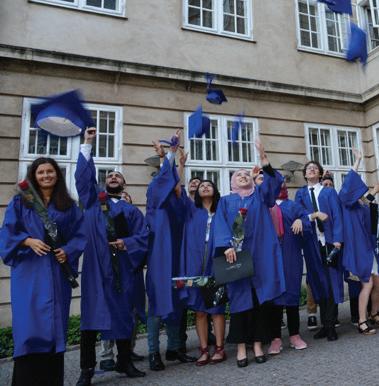
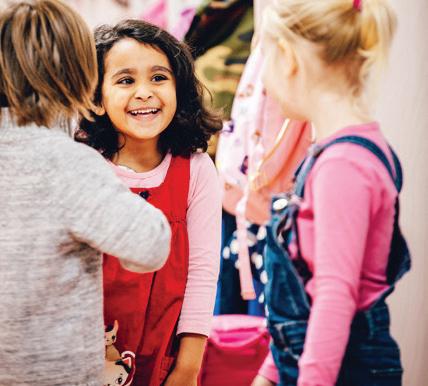

The International School of Hellerup is a Not-For-Profit IB World School with over 600 students representing more than 70 nationalities from around the world.
Find out more about ISH, book a visit or contact us at + 45 70 20 63 68 I info@ish.dk I www.ish.dk
little while until it was ready – quite an inconvenience when you have an eightmonth-old baby to look after.
“When we got there, the people who were renting here left the place in chaos. It was a complete mess, so I stayed in a hotel for two weeks with the baby, while people came in to paint and clean everything,” she recalled.
“My husband was also in the house making sure they were doing the things they needed to do. It was a very tough time.”
And things didn’t really improve once they’d moved in.
Alone at home with her baby, while her husband was working long hours to impress his new employer, it was hard without somebody occasionally giving her a chance to take a break. With no family to support her, Barbara was ready to return to London
“I was very nervous about just leaving the house,” she remembered. “It was hard knowing that I would need to start again from zero.”
After a while, she realised she had to do something in order to make some friends, and she wrote a post on the expat Facebook group in Copenhagen.
Even if it was a little embarrassing to put herself out there, that post ended up being very helpful. She got a few answers and made good friends with two women who also had kids.
Around the same time, her toddler
Barbara opened her studio in the summer of 2022.
The studio specialises in eyelash extensions and makeup services.

It also sells a wide range of Shea butter, which can be used as a moisturiser, salve or lotion.

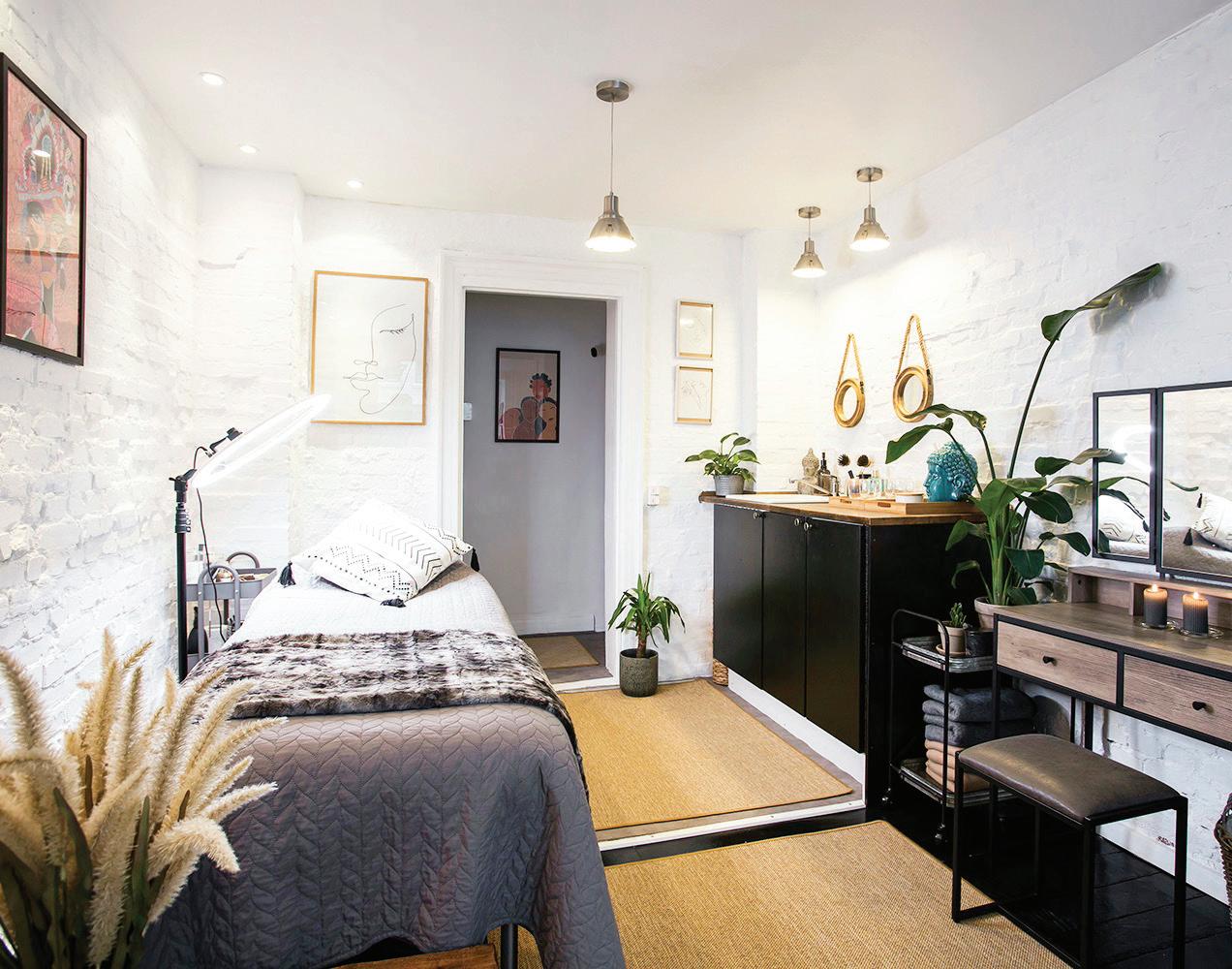

The studio is located at Classensgade 7 in Østerbro. Call 5356 4504 to make an appointment.
Appointments can be made up until 22:00 on weekdays and 19:00 at the weekends.
Find out more at barbaramensah.dk.
started daycare and she found a job as a beauty therapist specialising in lash extensions – the recovery was total.
After less than a year, she quit her position to work alone as a freelancer without a premises. A few false starts followed, but finally, in the summer of 2022, she found a suitable location to launch her new venue: Barbara Mensah Beauty on Classensgade.

Crucial to her work is contacts, and in 2019 Barbara created a Facebook page called ‘Warrior Women’, which today has 1,600 members.
It’s especially aimed at women expat entrepreneurs in Denmark. Starting the group helped Barbara to develop her clientele and also make new friends.
“Denmark makes it very easy for anyone to start their own business – women as well as men,” she contended. “I haven’t encountered any obstacles stopping me from becoming a businesswoman.”
With all her work responsibilities, Barbara’s new challenge has been ensuring the perfect balance of spending enough time at home with family and spending time at her new studio.


“I realised there’s never any balance; you’re always gonna feel bad. You just have to accept it and do the best you can,” she said.
But with her son starting school, she takes comfort from knowing he is well looked after.
Overall she has learned to love her life here, and it all started by meeting likeminded people: “The school system is great, transport is great – you just need to make some friends, that’s the key.”
In 2019, Barbara Mensah created a Facebook page called ‘Warrior Women’.
Today it has 1,700 members – mostly women expat entrepreneurs in Denmark.
The organisation tends to hold @@ events every month – perfect for networking with other members.
Members share business advice, top tips for living in Denmark, cultural knowledge and more.
Typical events include yoga sessions, lectures, workshops and coffee catch-ups.
Sign up via Facebook. Approval to join the group is normally granted within hours.
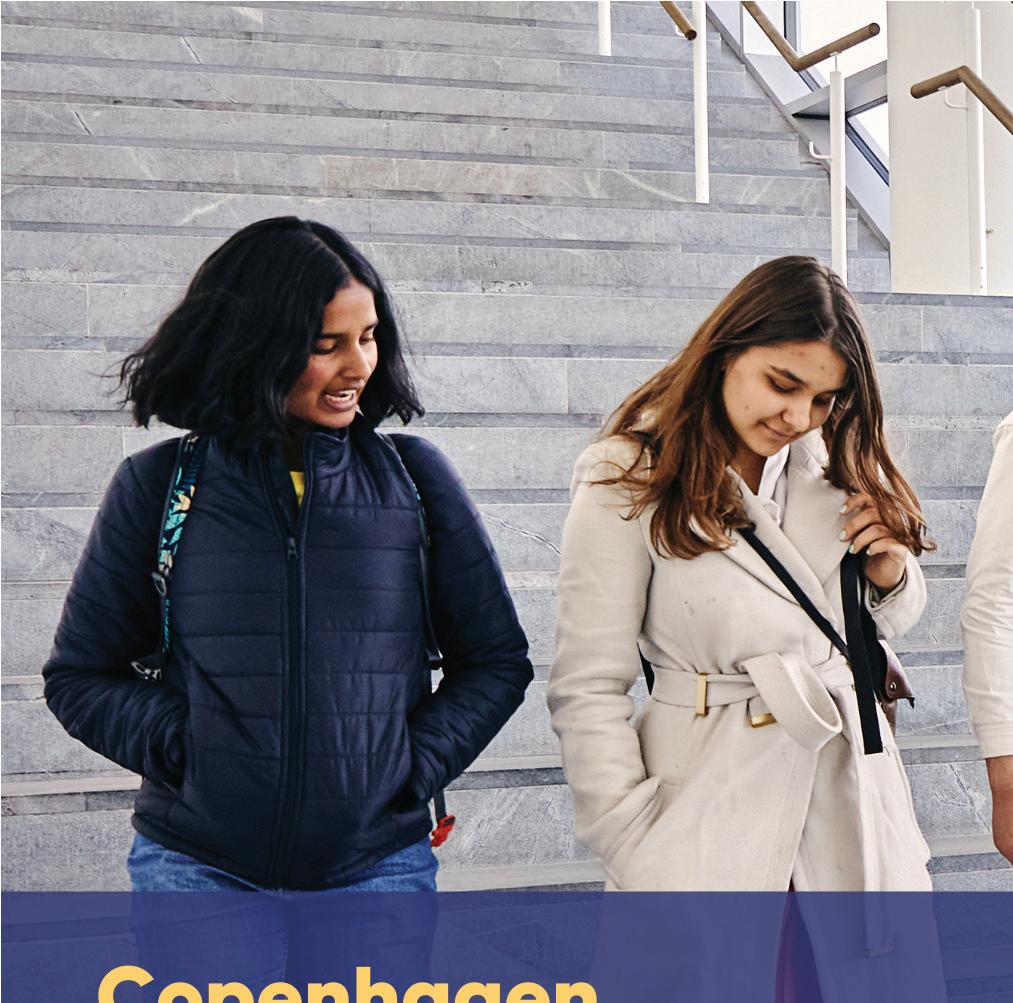

 BY LENA HUNTER
BY LENA HUNTER
If you’re reading this, you poor soul, then it’s because you’ve wound up by the slings and arrows of outrageous fortune in the northern hemisphere during the winter.
Some people seem to traverse the coldest season with the kind of dazzling optimism that makes you want to smash a biscuit tin over their heads.
So how do they do it? Well, it’s easy.
Is it SAD or am I just sad?
Living in the northern climes you’ve surely heard of Seasonal Afflictive Disorder (SAD). As you can surmise from the acronym, it’s a type of depression caused by the onset of winter that makes you feel sad in capital letters.
Symptoms include lethargy and low mood, but the jury is still out on why some people develop SAD and others don’t. Around 8 percent of the Scandinavian population experience the ‘Winter Blues’ and it’s more prevalent among women than men.
Studies have shown that the brain’s production of mood-regulating neurotransmitters, such as serotonin, relates directly to sunlight exposure. While Denmark is blessed with 17 hours of daylight in the summer, in the winter
you’ll be lucky to see seven.
Not only that, but your vitamin D levels take a beating in the winter. Vitamin D aids your immune system, nervous system, muscles and calcium absorption.
Supplement your soul It’s wise, therefore, to give your body an artificial boost. Thanks to modern tech, light therapy lamps are now affordable, portable and widely available.
Yes, they seem a little creepy, but nobody has to see you gazing blankly into its luminous depths like a cave-dwelling reptile – you can just absorb its power in private and spend the rest of the day fully charged and absurdly blithe.
Plus, as per government advice for the entire northern hemisphere, Danes pop vitamin D tablets like candy, or more accurately, they eat candy like it’s Vitamin D.
Combined, a lamp and a supplement won’t rival a hot Friday afternoon of sun-worshipping at Krøyers Plads, but it has the semblance of self-care and might lift your spirits. When you’re facing four months of darkness, a little means a lot.
When you’re on your second espresso, psyching yourself up to turn off the light
therapy lamp and set forth on a dark, wet and joyless morning commute, it can be healthy to remember that life finds a way.
Bears, for example, survive Arctic conditions by making a den and going into a torpor. By all means, go into a torpor yourself, but it probably won’t look good in front of your colleagues.
More socially acceptable is to make yourself a den – which means embracing the flogged-to-death-by-tourist-guides concept of Danish ‘hygge’. What hygge boils down to is choosing the people you’re going to hunker down with for the winter: the kind of crew you wouldn’t mind being sealed in an air-raid shelter with, together with only canned foods and Monopoly.
Find those people and keep them close. Establish a schedule of casual socialising to combat the fearsome isolation of the ping-pong, work-home routine. While you’re at it, make your home ‘hyggeligt’ to support a positive mindset: decorate, play music, clean up, cook good food.
Mental framing may be your best weapon. A 2020 study by health psychologist Kari Leibowitz of attitudes towards winter amongst residents of Tromsø, Norway – which sees only three hours of daylight during winter – found that the more they perceived winter as
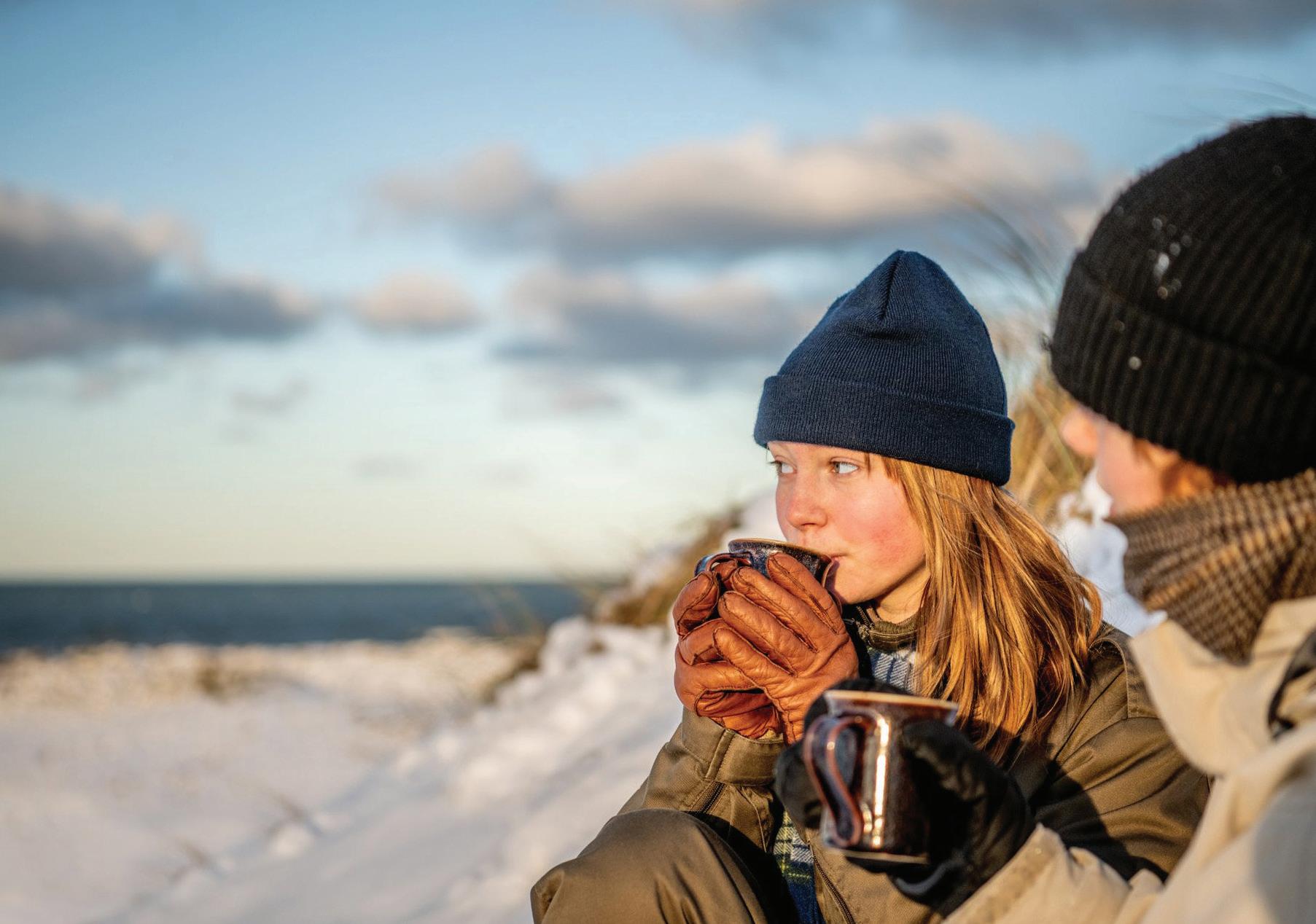
an opportunity to enjoy the climate, the higher their levels of life satisfaction and overall mental health.
Nature Lesson 2: Warmth
Here’s what bears do: they gorge themselves to form a thick layer of fat before they turn in for winter.
Whatever happens over winter, there will almost certainly be some gorging. Brace yourself for cheese fondue, pork, duck, gravy and an avalanche of potatoesevery-way.
Danes are feeders and ‘tis the season when bottlenecks of decadent julefrokosts, reunion drinks, buffets and family parties will hijack your weekends. Every shop will adopt the ceremonial bowl of pebernødder (cardamom biscuits) and some staff may even accost you with a thimble of gløgg on entry.
So the layer of fat is a given. But you should still supplement nature’s jacket with a high-quality winter coat. Puffer if possible, fur-lined if you want, but hooded is a must.
Also crucial are long-johns, as is ensuring a secure connection between sock and longjohn. Essentially, if you were to strip a Dane in winter, you would find a thermal layer forming a perfect seal from neck to toe, like a ham in a sous-vide machine.






LIVING BY ALFA is community-orientated, cost-effective, close to nature and convenient in every possible way. The future of rentals is here; jump on board today!



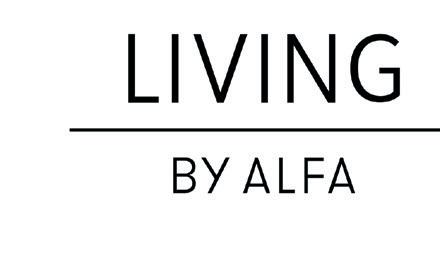
Moving to Copenhagen as an expat opens up all sorts of questions about where and how to live. Many opt for the city centre, others the countryside, but both can be lonely choices.
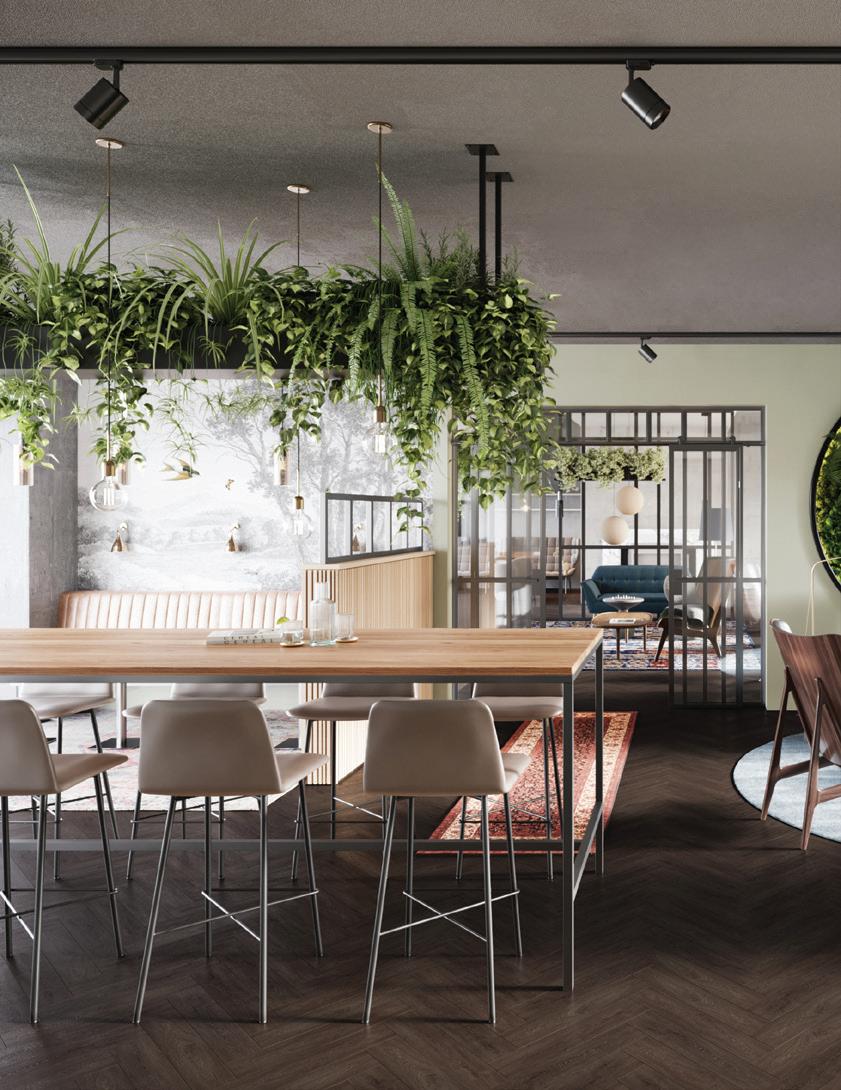
What often eludes the internationals is a sense of community – a quality at the heart of the ethos of LIVING BY ALFA.
Offering spacious, far more affordable accommodation than the city centre, and more social possibilities than the countryside with plenty of outdoor options, it’s a happy marriage of everything new arrivals to the capital could wish for.
Sign up for an Info Event
Visit the Showroom Schedule an Appointment
Attend an Open House Furnished/Unfurnished Flats
LIVING BY ALFA is owned by ALFA Development, a Danish privately-owned real estate company with expertise in developing large-scale urban areas, as well as in the conversion and renovation of existing buildings.
Also established in Sweden, ALFA Development is in the process of expanding into the UK as the company sees potential for the co-living concept. Andreea Kaiser, its Co-Founder and Group CEO, predicts a bright future for the company. “As we roll out LIVING BY ALFA across Denmark, Sweden and the UK, our drive is to constantly be at the forefront of innovation within the co-living sector,” she explained.
LIVING BY ALFA is a convenient, social and intergenerational community, a little similar to the Danish tradition of Bofælleskaber, but one that is professionally-managed. Offering a mix of amenity spaces, services and activi ties, it’s a coliving concept increasingly being referred to as the ‘hotelisation’ of residential real estate.
Both spacious and reasonably priced, its community offers effortless interaction, as many events and activities are facilitated to bring the customers together, across different nationalities and generations. The result is di versity, togetherness, well-being and a sense of belonging.
The LIVING BY ALFA concept is the result of years of extensive research. The concept is based on the core ideas of the sharing econo my, community-building across generations, convenience, social responsibility and envi ronmental sustainability.
The research assessed the needs of potential customers: essentially how the community can make their lives easier. Everything should be effortless for the residents – no problem unsolvable or incurring too much extra ex pense.
LIVING BY ALFA’s location in IrmaByen neigh bourhood in Rødovre, a suburb on the edge of Copenhagen only 8 km from City Hall Square, enables the residents to both feel part of the city, but also close to nature.
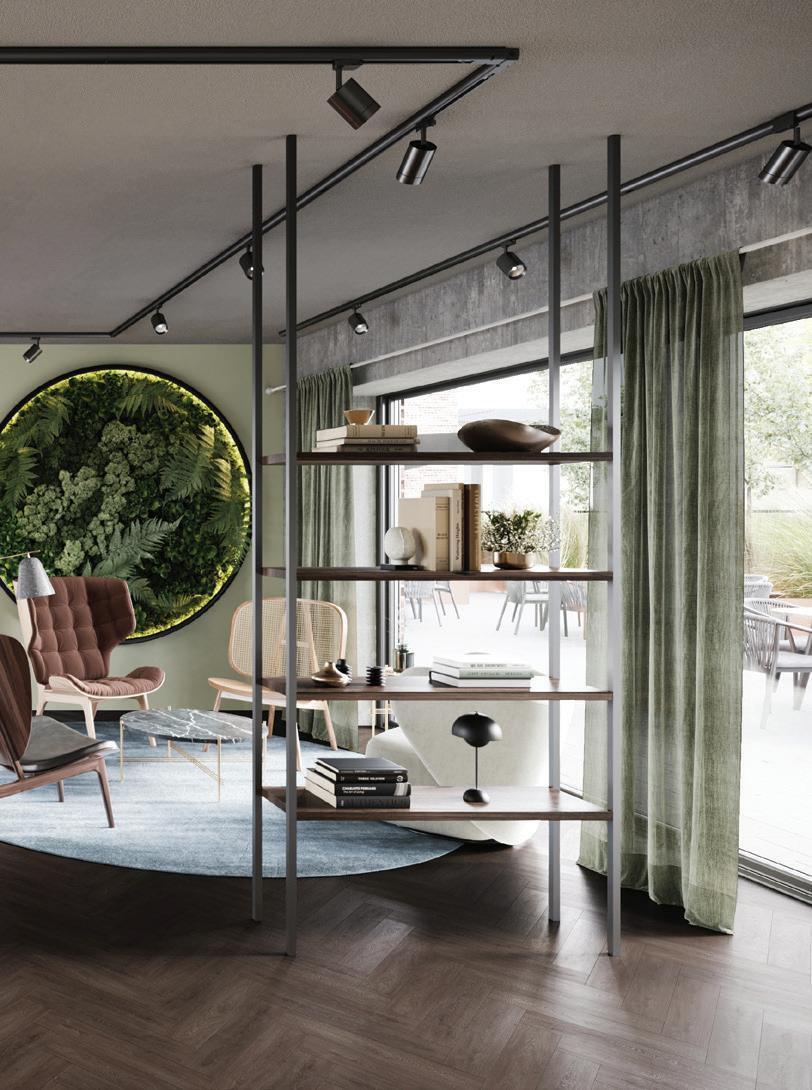
The surrounding area, whilst rich in the trap pings of urban life (gyms, shopping centres etc), also provides unlimited potential for strolls, jogging and outdoor leisure activities at the Vestvolden recreational and nature area. In addition, tennis, ice hockey, football and even camping are all located 5-10 min utes away.
Transport is also convenient: one of the coun try’s new cycling superhighways is nearby, and there are direct rail and road links too.
The apartments are far bigger than what you might expect to find in the city cen tre: sizes range from 63 to 140 sqm. They are professionally managed and come fur nished or unfurnished.
In total, there are 163 homes, starting in price from 10,950 kroner per month, of which 62 are earmarked for tenants over the age of 55.
LIVING BY ALFA targets young families, sin gles and young professionals for the re mainder – of whom expats have been iden tified as a key group.
Families play a large role in the LIVING BY ALFA concept – and not just the children, whose safety is factored into all of its fea tures.
Should extended family want to visit, there are guest rooms onsite that can be rented at a reasonable price for the duration of the stay.
Then there is storage, which can be found in the basement along with a carpark. Many of the customers are downsizing Danes and the unit sizes cater to all requirements.
For a small fee every month, residents are en couraged (but not obliged) to join ‘The Club house’ – the communal area inhabiting most of the ground floor.
The principal rooms are the lobby, lounge, home cinema, kids’ playroom, common event room with adjoining kitchen, along with three guest bedrooms.
There are also areas adjacent to The Club house and the 1,800 sqm elevated garden. They include a restaurant, takeaway, two su permarkets and additional specialty shops at the base of the building.
Food-sharing, well-being activities, quiz nights and classes are just some of the many activities available to residents: a social life on tap.
LIVING BY ALFA’s research demonstrated that relationships are a powerful tool in the way we live. Being part of a community helps us to have a better quality of life and even a longer one.
It also shone a light on how more people fa vour ‘suburbanisation’ – the movement away from over-populated and polluted city cen tres in quest of a cleaner, quieter life, but still within a convenient distance from work.
LIVING BY ALFA offers this and more: joining them on this journey requires an initial leap of faith, but once settled, you’ll question how you could have ever settled for any other kind of rental agreement.
Every time you venture into the communi ty, you’ll meet somebody new, forging rela tionships with both fellow internationals and Danes.
It’s like the lobby of a boutique hotel – there’s a community manager to take care of your every need and an app will keep you informed of all the possibilities – but all the guests are in the same boat.
They’re not just killing time – they’re happy to be there and want to mingle!
In a nutshell, families: children, parents, grandparents and internationals … after all, who doesn’t count a foreigner among their relatives these days?!
With over a third of the 162 apartments reserved for people over the age of 55, a pledge to attract many families, and a desire to also draw in internationals, LIVING BY ALFA in IrmaByen promises to be the most intergenerational and diverse community in Denmark.

Nobody will feel out of place, as it genuinely caters to all-comers. This is particularly pleasing news for internationals, who can often feel unwelcome in environments where being unable to speak Danish is frowned upon.
It would be inaccurate to say the tenants have nothing in common. After all, they’re kindred spirits who all know what they’ve signed up for, and while the apartments are affordable, they’re not cheap either, so most are moderately well-off.
But let’s speculate: there’s undoubtedly a few types who will find the living arrangement more agreeable than others, so here’s a few examples of the kinds of tenants who might end up at LIVING BY ALFA

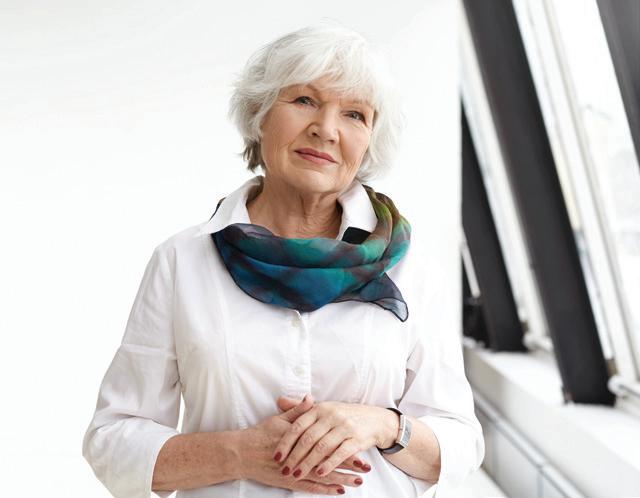
Name: Inge Nielsen Age: 77
Nationality: Danish
Primary Motivation: To save money
Inge is a retired widow in her early 70s who has lived in Copenhagen her entire adult life. While she has friends and is still active in the community, she has a major problem: the cost of continuing to live in the house now all her children have left home.
Besides being far too big for her, the government demands 3 percent of the total value of her house every year. When she and her husband paid 2 million kroner in 1979, they had no idea it would one day be worth 12-15 million kroner! Despite paying off the mortgage long ago, this amounts to close to 300,000 kroner every year – a crippling cost she can no longer endure.
A one-bedroom flat in Living by Alpha would cost half that amount annually – and she would have an eight-figure amount in the bank to boot, more than enough to tide her over.
Inge’s not too sure about the app, but gathers there will be a handy alternative on the wall in the lobby, which will be much easier to handle. But if in doubt, she’ll just ask the community manager.
And when her children want to bring their grandchildren to visit, she can use one of the designated rooms to put them up!
Names: The Jensens
Nationality: Danish
Primary Motivation: Secure environment for kids

Dorte and Thomas Jensen, two professionals originally from Jutland, don’t have the strong connections that most Copenhageners tend to enjoy! Since starting a family, they’ve lived in a series of apartments: all progressively bigger and more expensive. But buying simply isn’t an option given their financial situation.
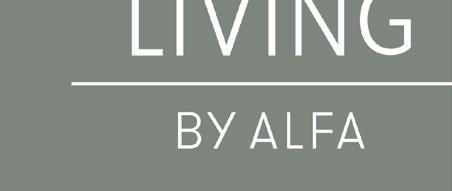
The cost of a family-sized apartment at LIVING BY ALFA is 20 percent lower than what they were paying for a much smaller residence just down the road.
But it is the benefits of The Clubhouse in relation to their children that will really make the difference, as it will be an enormous relief to allow Ida and Alfred to play outside the apartment in the secure knowledge that their safety is guaranteed. With no communal garden area available at their current residence, long trips to the park were needed to allow the children to cut loose.
The kids will make use of the well-stocked children’s playroom on days when it isn’t a crime to stay indoors and, when it is, to roam for hours through the pathways and pergolas linking The Clubhouse to the children’s playzone in the huge courtyard, while Mum and Dad make use of the sundecks, fitness zones and petanque court, taking in the views of the lush landscaped garden.
Name: James Davies Age: 44
Nationality: British
Primary Motivation: Wholesome choice
James, who together with his Danish partner have two children at Copenhagen International School, confesses to being a little envious of his children’s school –so unlike the drafty corridors he had to put up with in Britain, he most admires the way the modern building controls light and air quality in the classrooms to extract the best out of the students. And so sustainably too.
If only their villa in Hellerup could be the same: geared to his family’s wellbeing and friendly to the environment. In reality, it’s an old building that is energy
inefficient and too dark inside. The sofas are uncomfortable too.
LIVING BY ALFA ticks all the boxes as far as indoor environment, sustainability and comfortable furniture are concerned. Besides, James was beginning to tire of all the extra taxes, maintenance work and gardening involved in owning a family home.


With the money from the sale, he figures the family will be holidaying in the Caribbean … for the next ten years at least.
Name: Helena Lund
Age: 27
Nationality: Danish
Primary Motivation: Value for money
It’s paradoxical that Helena is both highly social and fiercely private. While she craves the com pany of others in the bar after hard days at the office, she also craves the solitude provided by living on her own … and having her own bath room!
But despite her respectable salary, living in her own apartment in central Copenhagen is be yond her means.
LIVING BY ALFA offers her the chance to up grade from her smallish room in a house-share to her very own flat and bathroom – all for just 20 percent more in monthly rent than she is cur rently paying.
Furthermore, when she fancies a drink after work, she needn’t arrange with friends, as there will always be something going on in The Club house – the backgammon night sounds partic ularly enticing!
The app makes it very easy to navigate LIVING BY ALFA, as well as the local environment, where she has found a good gym and large shopping centre within walking distance.


John and Suzi Taylor
Age: 34 & 32
Nationality: American
Primary Motivation: Gateway to Denmark
John and Suzi Taylor are an American expat couple, provisionally in Denmark for three years, who are keen to enjoy their time in Denmark to the fullest.
John’s employer offered to house them in a fashionable suburb of Charlottenburg, but Suzi worried whether she would feel isolat ed. She had read that the Danes are a hard nut to crack, and that expats spending two or three years in Denmark were lucky if they
made any friendships with the locals.
That’s when she heard about LIVING BY ALFA: a community where Danes and in ternationals regularly mingled and enjoyed social functions together.
John and Suzi are looking forward to get ting to know the Danes. Why else would they come all this way?
Paolo Padovani
Age: 27
Nationality: Italian
Primary Motivation: Friendships
Before moving to Copenhagen, Paolo weighed up the options: he could afford to rent a small flat in some of the city’s less fashionable districts and commute, or he could find a room closer to work in the centre.
Most importantly perhaps, Paolo knows nobody in Denmark, is teetotal and is quite shy. He couldn’t imagine going out and meeting people, and he doesn’t play any sports either. His biggest passion is walking.
LIVING BY ALFA appealed to him because not only was the rent for a single person’s flat highly affordable, but it would also enable him to meet others in a convivial, non-awkward setting that doesn’t revolve around drinking. It sounded ideal.
And who knows: maybe some of the oth er tenants might like to join him on a hike.
If they’ve got clubs for flower-arranging and book reading, why not hiking. If they don’t, Paolo will start one!
A community where tenants socialise across generations, nationalities and professions
LIVING BY ALFA provides a Build-to-Rent Community to foster relationships between the residents. Its unique attributes – Common Areas and Amenity Spaces, Activities and Events, and Services – enable it to encourage the residents to socialise across generations, nationalities and professions.
The Common Areas and Amenity Spaces are designed to encourage interaction, and the Community Team is charged with planning healthy, value-based Activities and Events to facilitate the process.

Sustainability is a part of every aspect of life at LIVING BY ALFA which has been built in adherence with the DGNB Gold certification, a sustainability benchmark for buildings in the Danish construction industry.

The LIVING BY ALFA community has an emphasis on sharing that involves an efficient use of resources along with a lower consumption rate per individual tenant.
The onsite restaurant, which serves a menu using fresh, high quality, locally-sourced products from regional farmers – an excellent place for tenants to meet one another.


In June, LIVING BY ALFA was named the Best Emerging Coliving Concept at the UN Habitat World Urban Forum. A jury selected LIVING BY ALFA, although it had already won an unofficial public vote via LinkedIn with 44 percent of the vote.
The annual Coliving Awards recognise the most thoughtful and innovative initiatives in the co-living sector.
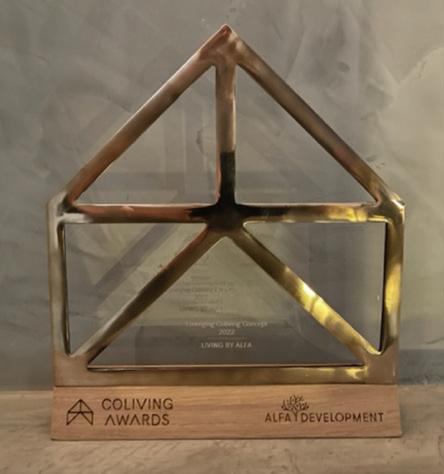 Scan the QR code and sign up for the next info meeting to find out more about LIVING BY ALFA
Scan the QR code and sign up for the next info meeting to find out more about LIVING BY ALFA










































At LIVING BY ALFA the ambition is to create a human-centred, authentic community where the tenants' needs are fully understood.
This is supported digitally by the LIVING BY ALFA app, a means of connection for all the tenants.
The app supports wellbeing initiatives such as community events and activities that tenants can register to join.
It also enables the tenants to connect with the community management team, wider community and service providers.
Overall, the LIVING BY ALFA app supports a sense of homeyness, safety and comfort.
Carefully curated by top Danish designer Ulrik Wang, the environment of the Clubhouse is designed to ensure you can live your best possible life
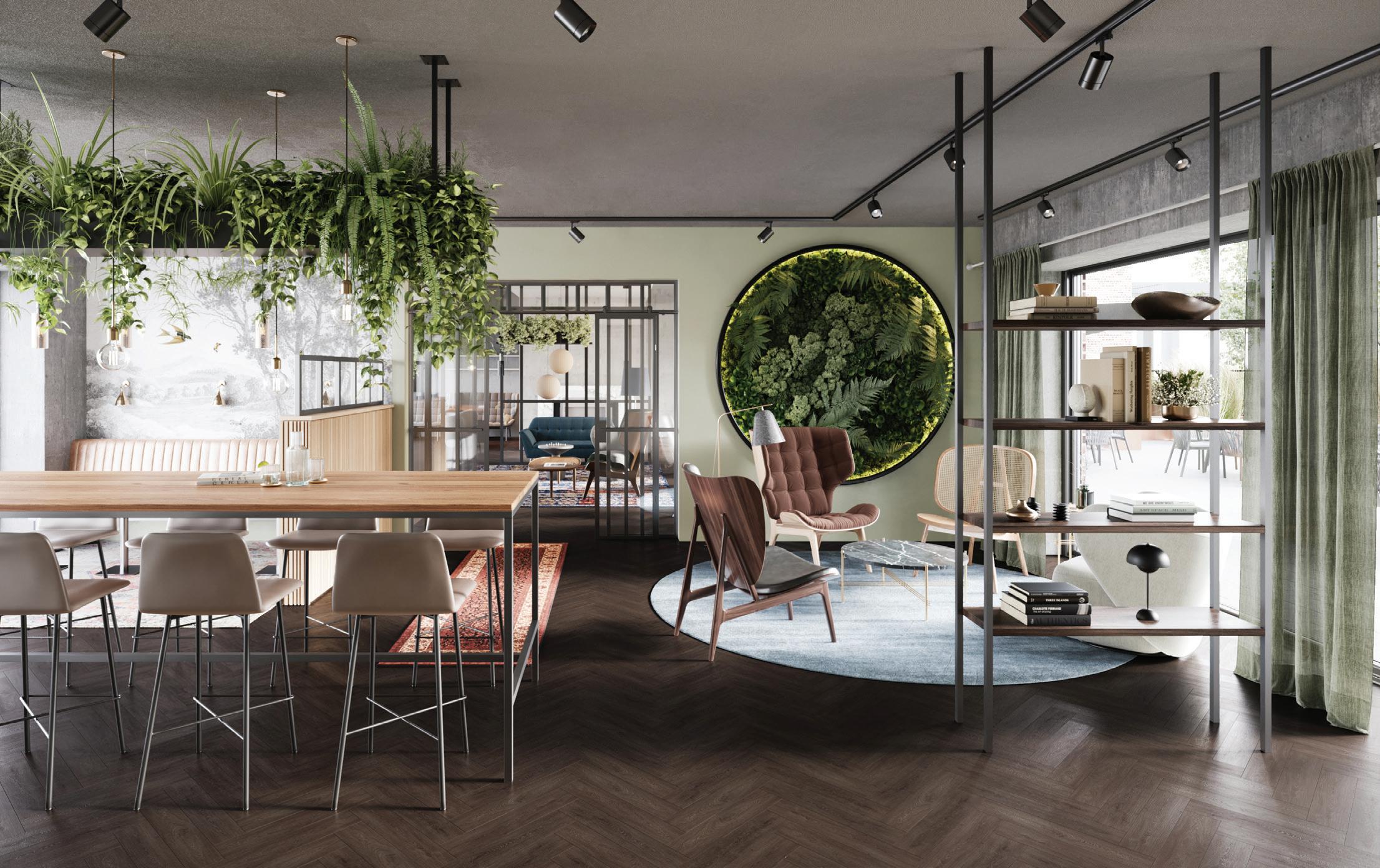
If you’ve ever been to restaurants such as Kiin Kiin, NOHO, Le Bambole or the Cock’s & Cows chain, you’re probably familiar with the work of Ulrik Wang, a furniture specialist who artfully combines forms, colours, shapes and fabrics to design living spaces you never want to leave.

Across every square inch of LIVING BY ALFA, his assured hand has selected every colour, plotted every contour, and factored in every crease and crevice to render a home both comfortable and convenient: the cornerstones of hygge.
As the tenants of LIVING BY ALFA, these unique ly-designed common areas are the private, styl ish extensions of your home! The environment is designed to both encourage interaction and contemplation.
THE LOUNGE The Lounge caters to all-comers. Instead of one large room, like a hotel foyer, it consists of smaller cosy spaces with varied furniture groups. ”Our ambition was to design various zones with different qualities,” explains Ulrik Wange. “A nice calm spot fit for creative thinking with the laptop, a favourite corner in an armchair for interesting reading or a cosy meal with friends at the large dinner table.Put on your slippers, recline in the soft seats and watch your favourite movies on the big screen in a cosy atmosphere. The home cinema is also the ideal set ting for lectures and private events

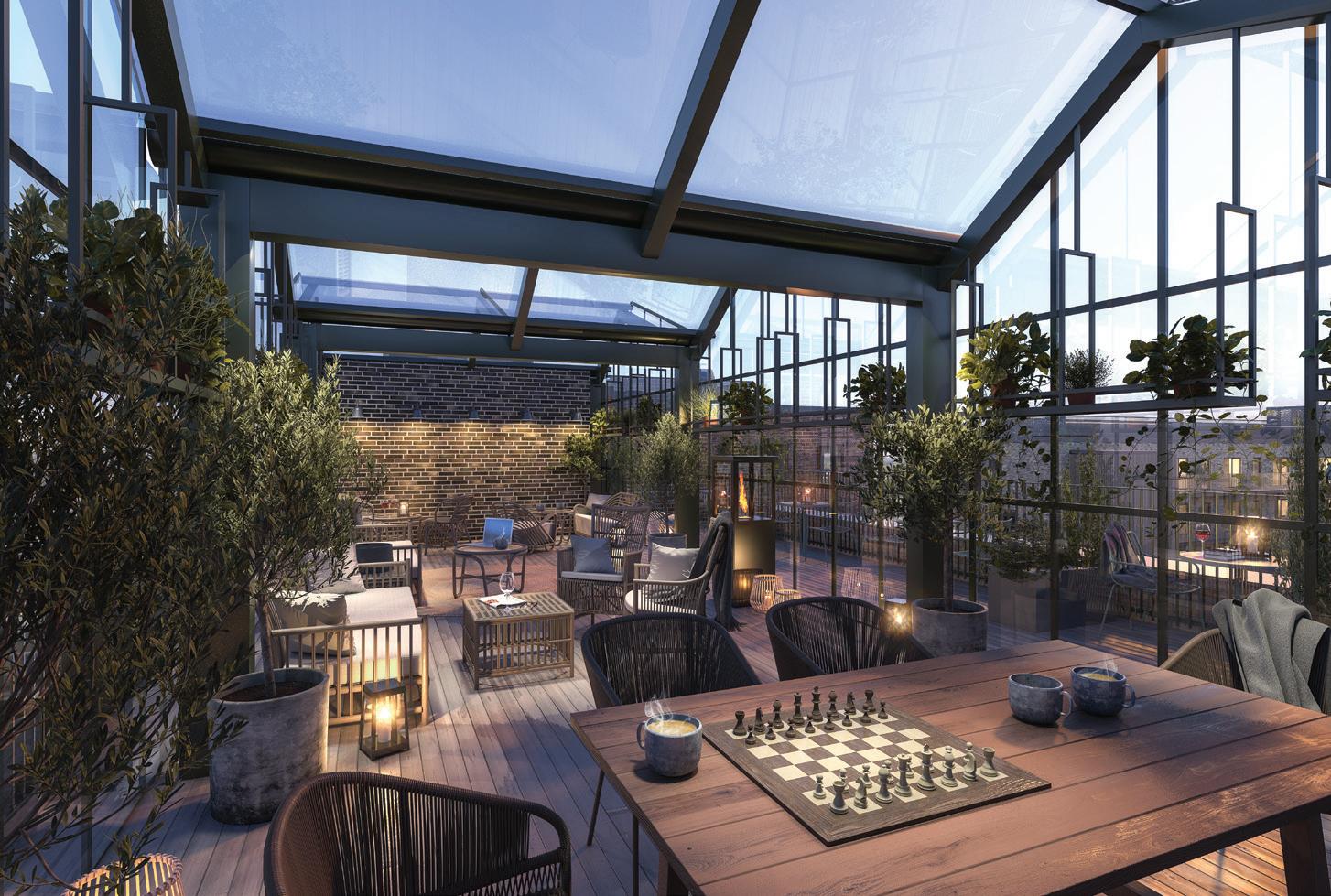
Primarily designed to be a quiet refuge for the 55+ tenants, on special occa sions the rooftop terrace is opened up to all tenants: most particularly for barbecues in the summer!

Spoil yourself, your family and your friends with tasty bites in the conve niently located Living By Alfa Restau rant, which will open in the Spring 2023.
Housing is one of the biggest struggles. There’s so much competition for places and often the place is rented before I have even had a chance to see it.
Rentals cost far too much in Copenhagen city centre, especially areas such as Frederiksberg or Vesterbro.
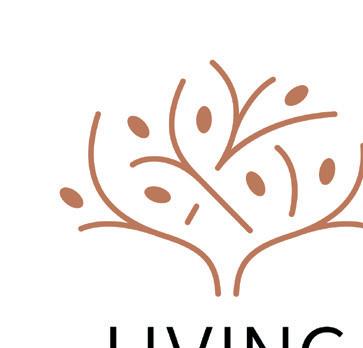
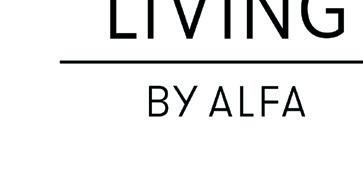
In total, LIVING BY ALFA has 163 apartments with move-in dates scheduled for January, March and June 2023. Over half of the apartments are still available.
LIVING BY ALFA apartments have a starting price of 10,950 kr/month. Moreover, it is only 10 minutes to Frederiksberg by car, and only 8 kilometres from Copenhagen City Hall Square.

Finding a job, a good school for your children and surviving the Danish winter are hard enough without having to worry about where you’re going to live and how long you can live there!
At LIVING BY ALFA, expats have the chance to bury all of their living-related problems with one swell swoop!
No more concern about where you’re going to be living once your short-term rental contract expires, or how you’re ever going to make a Danish friend!
Because all the solutions, and more, are under just one roof at LIVING BY ALFA.
All my previous rental agreements have been short-term! I need something more permanent.
Transportation is important to me and yet buying a car is expensive.
I’ve accumulated a lot of possessions that I don’t want to give up when I move.
You can keep the lease for an unlimited period with three months’ termination notice.

There is a bus stop with direct routes into the city centre, and the cycling superhighway will take you into the city within just 15 minutes.
You have the option of renting unfurnished or furnished. In addition, all apartments have a storage room. For some of the apartments it is located inside, while most are in the basement.
I don’t have a lot of Danes in my group of friends, and I don’t know the language very well.
I am thinking about starting a family/ growing my family.
I have no furniture and would like to find a long-term rental.
I struggle with urban living if I don’t have green spaces nearby so I can connect with nature.
With the help of the Community team and the Clubhouse, expats can meet Danes and other expats in a variety of events and activities. The common areas are designed to be perfect for meeting people and socializing.
Not only does the Clubhouse have a children’s playroom, but the apartments are designed with child safety in mind and security systems.
LIVING BY ALFA offers the option of fully furnished apartments.
Beyond the large private courtyard, with its landscaped garden and raised flowerbeds, LIVING BY ALFA is situated close to several green areas, such as Espelunden and Vestvolden.
I would like to sometimes host parties: dinners, birthdays, sports club meetings etc.
My family and friends will come to visit for a few days and I don’t have an extra bedroom.
The common areas can be rented at a special rate for the Clubhouse members. Moreover, you can join or start your own club with the help of the Community Manager.
There are three hotel-like guest rooms you can rent out for your guests at very reasonable rates
The Community Team is led by Iris Elena Iacob, the Community Manager, whose main role is “bridging the gap between community needs and processes” while helping to build a community that consists of multi-cultural and multi-generational members.
“There are many places that have com mon areas with a neighbourly feeling, and you can spend time with your neighbors everywhere,” explains Iris.
“The difference at LIVING BY ALFA is that we have built the spaces for you to make it more accessible and easier to reach. I am there to help create the connections and guide the journey from strangers to neigh bours to community.”
Iris is responsible for tailoring events, work shops, classes and activities for all, whilst providing a support circle to tenants in need of assistance. Crucially, she is also an expat – from Romania.
“Being an expat myself, I do know most of the struggles, questions and wishes that one might have on their journey encoun tering a new country,” she said.
“I am there to help the expats integrate into the Danish community, to build together new rituals, understand the cultures and differences and make them work together. But I can also just be there to listen, give a piece of advice or help you apply for your CPR number or Permanent Residence.”
CPH POST caught up with Iris to find out more about her own expat journey.
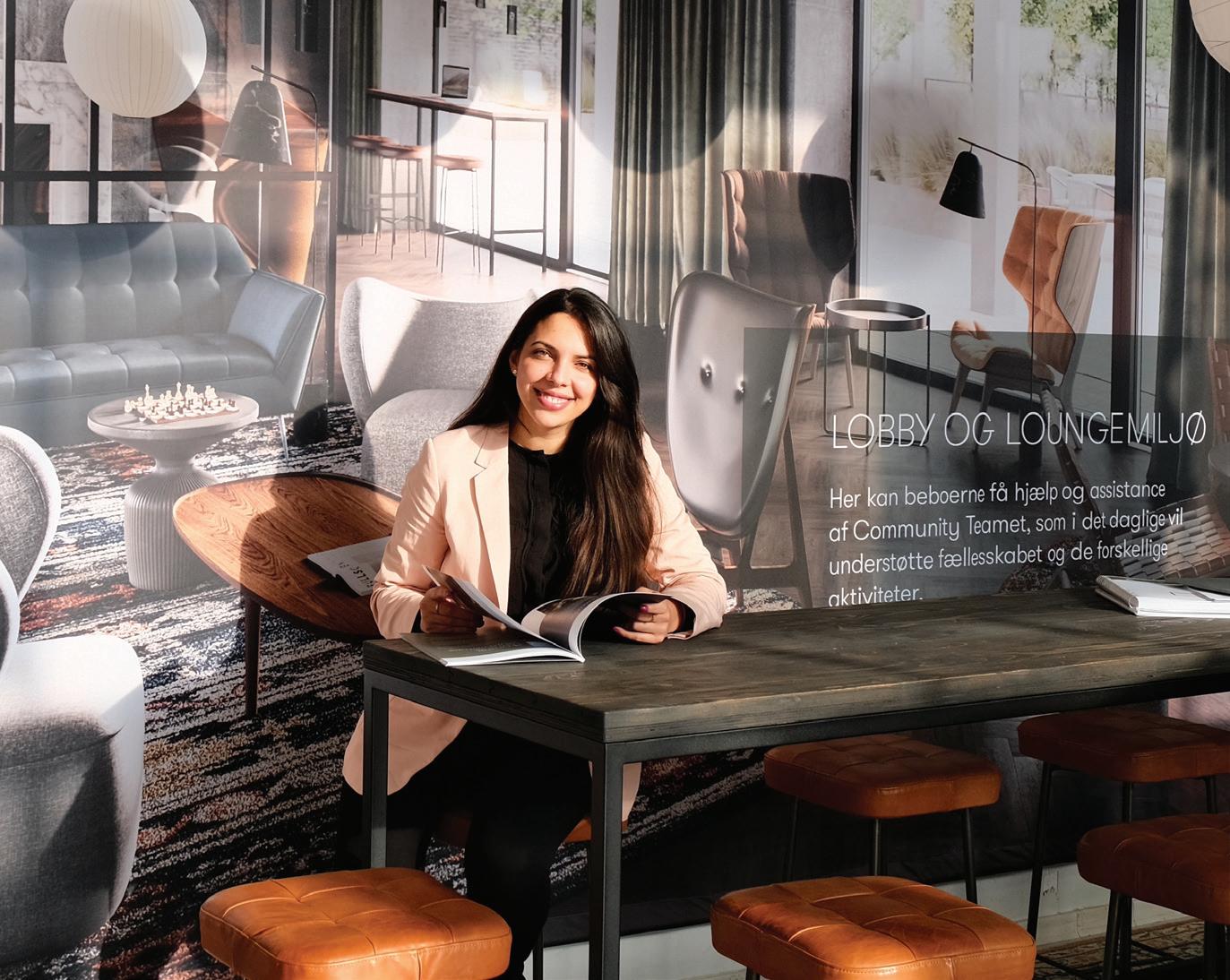
How long have you been in Denmark?
In 2014, I took the decision to take on an adventure: move to Denmark. The simple reason was my interest in get ting to know new cultures and learning about what the world has to offer.
So you relate to the problems faced by new arrivals in Denmark?
Yes, while moving here was an easy de cision for me, it’s had its ups and downs during the years I’ve been living here. Being in a new place, alone, can stir up a lot of emotions – some that were new to me. There have been many times when even as an extremely social and extrovert person I have felt lonely. Not because I didn’t have people around me, but because I did not feel like I be longed to a group.
How did you overcome your loneliness? Slowly, I have found a group of people: my community (not one from the same country), and that’s when it all made sense. I understood that when you have
a strong community of people around you – which you can rely on and that you can even consider family – then that feeling of belongingness can con vert your loneliness into another set of emotions … positive ones.
Were any of your friends Danes?
Well, no. I had no Danish friends, and I started to wonder why that is ... and it seemed like many of my international friends wondered the exact same thing. But then I realised that all it takes is just one Dane to introduce you into their groups – into their culture and on your way to integration.
What qualifications do you bring to your role?
My studies in International Hospital ity Management and my work expe rience have been the gateway for me understanding Culture & Communica tion. I am looking forward to my role as Community Manager because I get to be the person that has the opportu nity to build bridges between cultures and generations and generate positive emotions.
For all the tenants at LIVING BY ALFA, their first port of call should they have a problem or question is Iris Elena Iacob, the Community Manager
We invite you to the showroom in Kaffetårnet at Korsdalsvej 101 every Thursday and Sunday. At the open houses you can experience the newly decorated showroom and ask questions to the realtors, while taking a look at the floor plans and sensing the special atmosphere of LIVING BY ALFA. After your visit, you can take your coffee for a stroll through IrmaByen's cosy streets. Here you can get a feel of the unique community that already exists in IrmaByen.
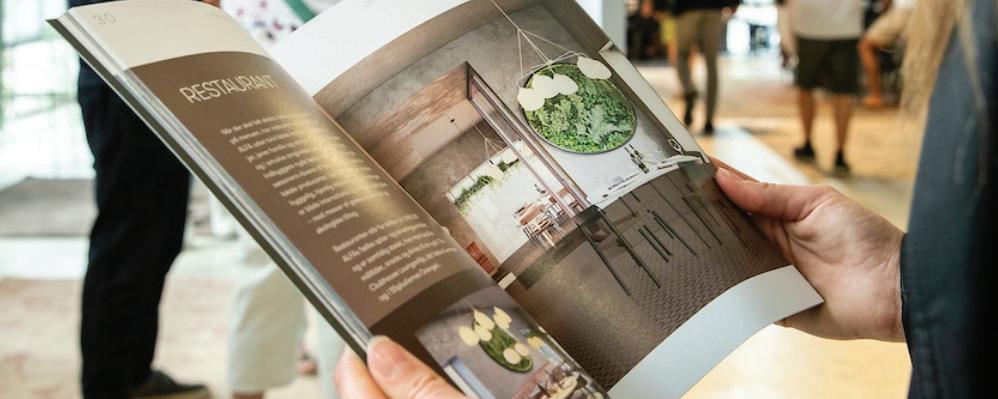


In Tønder, southern Denmark, a familiar harbinger of winter is the sight of the so-called ‘sort sol’ (black sun) – migrating starlings in flocks of up to 1 million birds. The tiny holiday-seekers fly south for winter, where they book up whole blocks of cheap, full-board hotel complexes on the Alicante coast.
It’s probably cheating to advise a winter break as a coping mechanism, but it’s one many northerners adopt. According to Danmark Statistik, every year 380,000 Danes go on a winter holiday – half to sun and sea and the other half to snow and ski.
What they’re all seeking is extremes. Danish winter is cold and dark, but there are no snow-swaddled mountains, no gloomy lakes under a layer of ice as thick as a seven eleven, no polar night, aurora borealis or bloodthirsty carnivores roaming the villages.
Denmark is a flat, bland vista of squat cities, towns and farmland, frequently bulldozed by fog and cloud, and never scorching nor glacial. If you can snag a cheap flight for some cheap thrills this winter, don’t say no.
If you’re staying put, then take this alternative nugget of migratory advice: pimp your vehicle for winter.
Put your car under a tarp or in a garage. Get a set of winter tyres. Get a squeegee, an ice scraper, and a thermal flask that actually fits your cup-holder.
If you’re biking, switch your tyres: if you’re still flying around on skinny 25mm racer tyres you’ll thank yourself for upgrading to at least a 28mm, but a beefy pair of 30+mms with hefty tread is life changing.
Have mudguards, bike gloves, responsive brakes, a balaclava with slits for eye holes so you can barrel down the road in sub-zero temperatures without frictionburning the skin off your face in the frozen air. Warm water works on a frozen lock and WD40 is your best friend.
The elephant in the room is Christmas. It deserves its own survival guide. It’s both a welcome oasis of promised relaxation and a life-upending barrage of obligations.
Nevertheless, the prospect of a soloChristmas is less gloomy than in last year’s brutal lockdown. Many of us were and will be alone for the holidays. If your family is abroad and you’re scrabbling for company, here are some tips.
Let go of your expectations. This isn’t as depressing as it sounds. Growing up, we’re spoon-fed an ideal of what Christmas should be by our families, half-
You don’t need huge glittering bows on a monstrous fir tree and a stack of gifts up to your elbows. Traversing airports and motorways, corona tests and living out of a suitcase just to appease the notion of ‘togetherness over Christmas’ is stressful. Admit it!
Once you free yourself psychologically from what you should be doing and who should be there, you will feel far more present and satisfied. Set your own tone and define your own enjoyment.
If you want to seek company in your local community there are communal dining arrangements, usually in support of charities, around the city. Search for ‘fællesspisning’ to find events near you.
Most Danes spend New Years’ Eve at home. If someone invites you to their home on the 31st, just say yes. Everyone’s looking for the perfect party and if you’re too picky you’ll end up with nothing.
Clothes off in the cold So far, surviving winter has been largely about avoidance. But the opposite strategy – embracing the cold – is frequently heralded as the healthiest approach.
Winter bathing is a national sport in Denmark. A dunk in ice water improves

circulation, burns fat, betters your immune response, releases endorphins and reduces stress. It’s an age-old secret to longevity championed in Scandinavia and well worth taking part in.
A word of warning: do not jump in. Cold water shock is real and dangerous. Keep moving in the water to aid acclimatisation, and warm up slowly afterwards. A general rule is to spend one minute for every temperature degree of the water.
On the flipside, saunas are another proven vitality booster during winter. They purport to offer many of the same cardiovascular benefits as cold water swimming and are also thought to benefit asthma sufferers and those with irritated skin. Plus it’s just nice to be warm.
Get outside without taking your clothes off by ice-skating, winter hiking in woodlands around the city, foraging for Christmas decorations or the last of autumn’s edible mushrooms. Take in the city lights and festive markets if you’re an urbanite – but for god’s sake go outside.
Whatever your approach to winter, a blanket survival tip is to put the effort in. No pain no gain. When energy reserves are low, you’ll be grateful for preparation and forethought. In the season of giving, you get what you give.
If you have school-age children, you may be wondering what the Danish educational system is like.
There are a number of questions that will spring to mind if you are a family with young children that have just arrived in Denmark. You may want to know about day-care and what the different options are. For those with older children, the question might be how does the education system function? Is it compatible with the one back home? Is it as good? Then you may need to decide whether to go state or private. All importantly, if my children don’t speak the language, how well will they integrate and will they make friends? It may also be relevant to ask what opportunities there are for higher education and will a degree or qualification taken in Denmark be recognised abroad?
The Danish school system is considered one of the best in the world and traditionally, Danish governments have always prioritised education highly.
Denmark is a small country with few natural resources, so an educated population is vital in our globalised world.
The National Reform Program adopted in 2013 was designed to get more young people to complete their education quickly, as well as ensuring high quality and efficiency within the educational system.
All children are entitled to free tuition at Danish municipal primary and lower secondary schools, as are adult
students living in Denmark, depending on the level and nature of the institution. However, private schools are also fairly common and as these are heavily statesubsidised, the fees are not as high as they might be in other European countries. Private schools may be faithbased or following particular educational precepts, such as Rudolf Steiner schools. There are also schools for the German minority in Denmark. International schools exist where the curriculum, which often follows a UK, US or French model, is taught in English, French, Spanish, German or Japanese. Although there may be some Danish students, the student body is typically international. These schools are private and approved by the Ministry of Education to teach in languages other than Danish, either for the whole school or parts of it.
Children whose mother-tongue is not Danish and are enrolled in a daycare facility may be given a language assessment if there are linguistic, behavioural or other grounds to suggest that the child may be in need of language stimulation. The language assessment is compulsory for all children aged 3 who are not attending a day-care facility. If the assessment shows that language stimulation is needed, the local council must provide it. In primary and lower secondary schools, bi-lingual children can take ‘Danish as a second language’. If basic instruction is needed, the child will be assigned to a reception class, a scheme for teaching in teams, or
individual instruction. Bilingual children can participate in ordinary teaching but those who need extra support are referred to supplementary teaching. The number of lessons is tailored to the needs of the individual. A limited number of bilingual children in primary and lower secondary schools are offered tuition in their mother-tongue.
Denmark has a long tradition of lifelong learning and many Danes participate in adult education. It is also common for workplaces to expect staff to upgrade their skills through educational schemes throughout their working careers.
There are so-called folk high schools in Denmark: they offer a broad range of courses lasting from 4 days to 36 weeks. No particular educational or professional qualifications are required to attend these and most students are between 18 and 24 years old. You sleep, eat, study and spend your spare time at the school. There are no exams – but you get a diploma as a proof of your attendance.

As for language schools, though studying Danish has recently become an expensive quest (unless you’re a refugee), some organisations offer free Danish courses – Red Cross and Bethesda church are two examples. Red Cross also does other relevant volunteer work such as their couples’ integration program, which provides help managing your relocation. As for digital means of language learning, you can start by checking out duolingo.com.
There are six stages of education in Denmark:
1. Pre-school
2. Primary and lower secondary education
3. Upper secondary education
4. Vocational education and training
5. Higher education

6. Adult learning.
Before they start pre-school, most Danish children have attended day-care, either in a nursery school or kindergarten.
After preschool, which is optional, children go on to do nine years of compulsory education in primary and secondary school, with an option to take a tenth year.
Pupils are divided into year groups by age, and progression from one year to the next is automatic. The same pupils stay together for all the 9 years. Classes usually consist of between 16 and 26 children.
The tenth form can be taken in the existing school if it is offered there, but is also available at an efterskole, ungdomsskole or frifagskole. As well as providing academic programs allowing entry into higher education, upper secondary education can offer programmes of a more vocational nature.
These are aimed at giving direct entry into the labour market and are often in conjunction with internships in various top Danish companies.





Birkerød Gymnasium , STX, HF, IB & Boarding School has been an IB World School since 1991, offering Pre-IB and the upper secondary IB Diploma Programme. A vibrant environment of more than 60 nationalities gives the school a unique international atmosphere in which not only English

and Danish are spoken, but also a number of other lan guages. IB at Birkerød Gymnasium is a unique chance to experience both the international atmosphere of the IB programme as well as the atmosphere of a Danish national school.

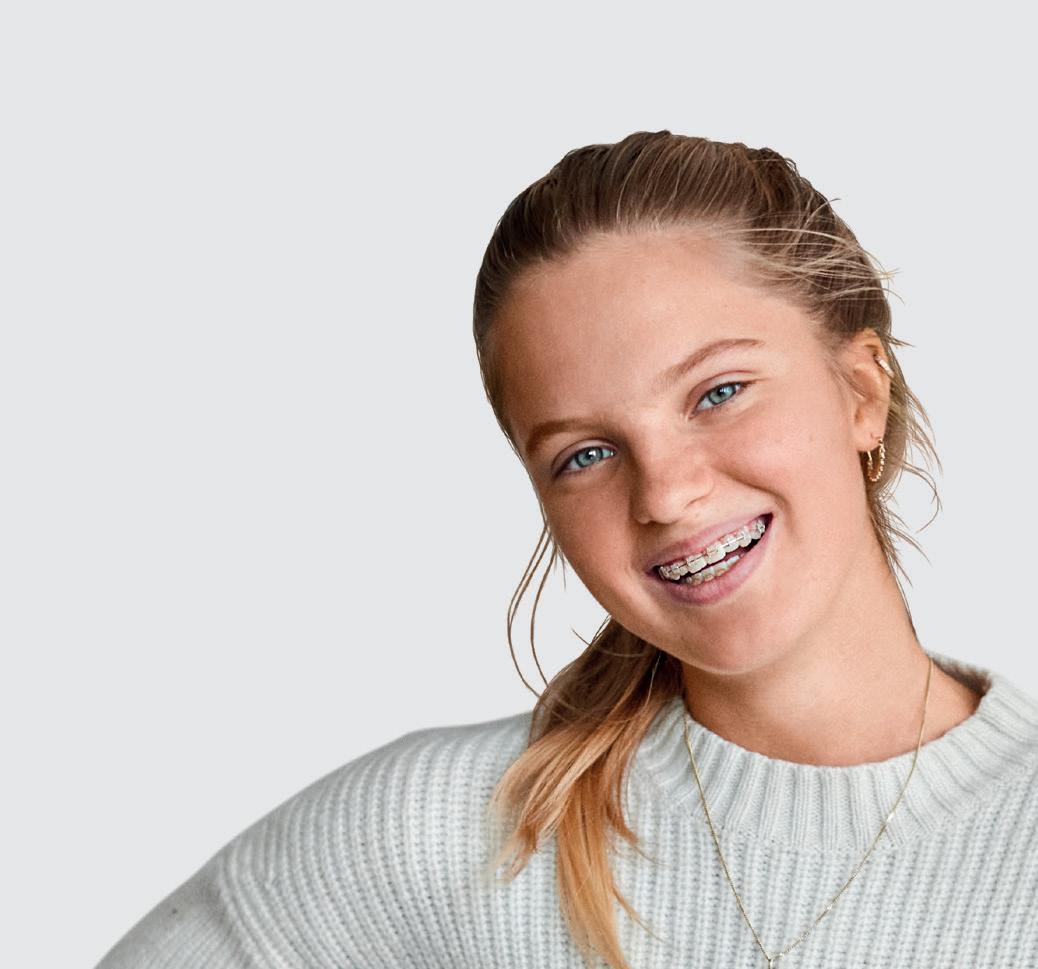
Job-hunting is an unappealing prospect at the best of times, not least during a global pandemic. For those looking to not only embark on a new career but do so also in a new country, the struggle is even greater.
There are a number of obstacles between applicants and their dream job abroad – some of them obvious, some of them less so. Fortunately, in Denmark there is a plethora of resources out there to make the challenge that bit easier, moving you one step closer to a new life of a more Danish variety.
For many internationals, a move to Denmark is hugely appealing. With a high quality of living and a work-life balance famed the world over, the small European state has much to envy. Furthermore, with some of the best English-speakers outside of the Anglophone world, many from these countries might think the move to be a simple one.
If this goes some way towards understanding the supply of international workers looking to Denmark, it is well matched by demand within the country too. A small country with a small population, companies of all size are beginning to look abroad to fill vacancies. Reliance on exports also plays its part, with a steady demand for natives of important foreign markets to provide local insights and linguistic support.
With this twofold action of desire and demand, it is tempting to think that a move to Denmark would be an easy one. For many, however, it is not so straightforward.
Many are fortunate enough to enjoy the support of the Danish government in making Denmark a permanent place of work. The Greater Copenhagen Career Program is a free six-month programme set up by the City to support international students in making the move to Denmark after they finish at a Danish university. It offers seminars and workshops on interview and presentation technique, CV and cover letter advice, and even LinkedIn tailoring.
With the support of a personal career mentor, participants are encouraged to explore their preferences and consider their qualities in order to land a job in the Danish job market. But they are not the only ones that enjoy support from the state.

A similar set-up is available for those who move to Denmark as a result of their partner’s career. The Copenhagen Career Program is a free five-day job-hunting course, also run by the City. It represents a conscious effort to encourage assimilation into the workforce, and includes matchmaking events and company visits.
Others, however, are left without the same welcoming party on their arrival in Denmark. For those that are
neither partner nor student, kickingoff a job search in Denmark can be a formidable task. This is the case for a number of reasons: the language is one most internationals are unlikely to be unfamiliar with; the work culture, though an improvement on most, is a unique one; and that’s before they set out on tackling the whole pile of paperwork!
Whilst English is a tongue that the majority of Danes can slip into with ease, Danish is still the language of business domestically. Whilst perhaps not explicit, there is certainly a sense in which employers expect Danish proficiency from their employees – a hurdle unexpected by many job-seekers.
With all these obstacles, you might be forgiven for thinking it is more trouble than it’s worth, but thankfully there are many organisations and individuals out there eager to motivate and support your job search.
One such organisation is English Job Denmark – a relocation and accommodation service consultancy located in the centre of Copenhagen. Its guiding mission is to ‘provide support every step of the way to a new life abroad’. Itself run by expats, the organisation provides support for everybody from those first thinking about making the leap to those already embedded in Denmark looking to further assimilate.
For job-hunters more specifically they offer 1-2-1 coaching sessions, CV reviews, LinkedIn support, and presentations concerning cultural integration. Their services provide talented internationals with guidance on how to shape their skills and experiences to specifically Danish employers.
Leslea Petersen, the CEO at English Job Denmark, puts it simply: “It’s about understanding what you have and what you can offer.”
You might have the perfect CV, fantastic previous experiences and great interview technique, but what Duevang believes many overlook are the cultural differences between Denmark and the applicant’s country of origin. Danish work culture is unique, and something people here take great pride in. Without taking it into consideration, many applicants are likely to fall at hurdles they didn’t even realise were there.
“The biggest challenge is cultural understanding. People can arrive in Denmark with the best, most accomplished CV and some wonderful experience, but unfortunately unless you understand how to communicate that to a Danish workplace then you’re not going to succeed,” Petersen contends.
“It’s not just about the salary at the end
of the month here. What recruiters in Denmark are looking for are people that are committed to their values – their mission as a company.”
One way English Job Denmark in particular has sought to raise awareness here is through the ‘Academy’ – an organisation set up by the group to ‘guide, advise and support internationals into employment in Denmark’. This is achieved through courses, workshops and up-skilling programmes, with regular Q&As with recruiters and events covering everything from CV writing to an ‘employment assistance hotline’.
One happy graduate, Geoff Oakley, stated that it provided him with the “confidence, tools, and cultural awareness that I feel I need to truly understand Danish market conditions, Danish society, and etiquette.”
For Petersen, there are three golden rules: “one, prove that you can deliver on the job; two, prove that you can fit in with the existing team; and three, prove that you will stay once you get that position”. With these in mind, the job-hunt might just get that little bit easier.
Petersen describes the market for English-only speakers as “tough” but, to paraphrase Teddy Roosevelt, nothing worth doing comes easy!
The Danish work culture is unique but many internationals fail to adequately consider it in their applications
Under the Danish healthcare system medical treatment is usually free of charge. However, dentistry and any medicines prescribed may be charged to the patient, though these costs are often subsidised to some extent by the government
All permanent residents in Denmark are eligible to use the healthcare system. Permanent residents receive a national health insurance card from their local authority which acts as an identity card and must be shown on visits to doctors, emergency rooms and hospitals. Anyone acutely ill is entitled to free hospital treatment, and this also applies to visitors from other countries.
If you do not speak or understand Danish, the staff can call in an interpreter to assist you. Likewise, if you need an interpreter at an appointment with a doctor, midwife, health visitor or visiting nurse you should indicate this when you make the appointment. This service is free of charge. Interpreters are neutral and bound by the rules of professional secrecy.
Anyone resident in Denmark is entitled to be registered with a general practitioner (GP). Your own GP will normally be able to find out what is wrong with you and how to treat you, but in some cases, may refer you to a specialist or a hospital. The name, address and telephone number of your GP is written on your national health insurance card. In order to see a GP, you will have to make an appointment by phone or via the internet.
If you are dissatisfied with your GP, you can change to another one. Changing a GP without moving to a new address at least 15 kilometres from where your current GP is will incur a 190 kroner fee. If you change GP as a result of moving, that is free of charge.

If you need medication, your GP will prescribe it for you. Prescription medicines can only be bought at pharmacies.
If your GP deems it necessary, you may be referred to a specialist. Some specialists require no referral, such as eye specialists and ear, nose and throat specialists.
If you become ill outside your own GP’s service hours, you can call the out-ofhours service.
In most cases you will have to go to a treatment centre yourself to see an outof-hours doctor. The out-of-hours service is open from 4 pm to 8 am on weekdays, weekends, and on public holidays.
Located at hospitals, emergency rooms are for serious injuries that your own GP cannot treat. At some hospitals you have to phone the emergency room in advance to let them know that you are coming.
If you need an ambulance, call the emergency centre at 112, stating your name and explaining what has happened, where and when it happened, and where you are calling from.
If you are pregnant, you may be examined several times during the pregnancy by your own GP and a midwife. Ultrasound scanning is also available in hospitals to make sure that all is well with you and the baby and to identify any potential problems as early as possible in your pregnancy.
When you are pregnant, the first examination in your pregnancy will be carried out by your GP, who will create a maternity record that you must bring along to all subsequent appointments. Your GP will notify a midwife of your pregnancy. The midwife will then contact you to make an appointment. Together with your GP you can decide at which hospital you want to give birth to your child. You can also elect to give birth at home with the assistance of a midwife.
In Denmark all women have the right to opt for termination of the pregnancy at a hospital in the first twelve weeks. In order to obtain a termination you must contact your GP, who will then refer you to a hospital.
You will receive assistance from a health visitor in your home when your child has been born up to the age of 2. In addition to examining your child, the visitor can answer any other related questions you may have.
All children can be examined and vaccinated free-of-charge. All children in Denmark are also entitled to free dental care until they reach the age of 18. Upon reaching school age, local authority doctors and nurses will perform preventative examinations of children
in their first and last years of schooling, and children will receive automatic appointments with the school dentist. If your child encounters problems at school, you can talk to the school psychologist about them.
Help and care in your own home Special services are offered to elderly people who need care and assistance. Elderly people may apply for home help for personal care, cleaning and assistance with shopping. You can also apply for help if you are very ill.
Elderly people and those who are very ill can also request a district nurse to come to their home to provide care and administer medication. A doctor will assess your needs in this respect.
If you have been hospitalised you may need home help or a nurse to help you when you return to home. Normally, the hospital will contact your local authority to make sure you will be given the help and assistance you need.
The information in the above article is taken from a brochure issued by the Danish Health Authority and the Danish Cancer Society. The easiest way to obtain this brochure is to visit cancer. dk/international/english, click on ‘Cancer prevention’ and find the link that reads: The Danish healthcare system. For information about the coronavirus in Denmark, see the Health Authority’s website: sst.dk/en/English
For seniors, more information about your rights and opportunities can be found at the DaneAge Association (ÆldreSagen): call +45 33968686 or aeldresagen.dk (but fire up Google Translate because the website is Danish-only).
True, more than 60 percent of the country is arable land, but there’s still plenty of nature, and outdoor activities are a great way to explore the country.

Some 16 percent of Denmark consists of forest and heath and 7 percent of wilderness areas such as lakes, bogs and meadows.
Added to that is the marvellous Danish coastline. Extending for 8,750 km, it outstrips Chile and even India!
So there are plenty of opportunities for newcomers to get the most out of their new country. Providing there’s an activity that rocks your boat, of course.
Rowing clubs are always looking for new members and you don’t have to be an experienced oarsman. If you are a newbie, why not try it out at a special free trial session organised by Denmark’s oldest rowing club, Roforeningen KVIK (roforeningen.dk/english). To help you with settling in, other expats in the club provide a
special mentoring service to newcomers.
Kitesurfing is a popular pastime in all seasons. Combining aspects of snowboarding, windsurfing, surfing, paragliding, skateboarding and gymnastics, it’s one of the ultimate sports for adrenaline junkies. Beginners can start by enrolling in a course or taking part in a camp at places like copenhagensurfschool.dk/en, coldhawaiisurfcamp.com and klitmoller.en.westwind.dk.
Whether it’s a rowing, sailing or speedboat, a kayak, canoe or pedalo, or even a floating spa, given the proximity of water, you’re never far away from a rental company in this country. But if you want to learn to sail properly, the Royal Danish Yacht Club offers beginner, intermediate and advanced sailing courses in English (learn more at kdy.dk) with the opportunity of earning a Danish sailing licence.
With its long coastline, and over 5,000
lakes, Denmark has a great selection of places to fish to suit all tastes. Locally, the Øresund is good for trout and cod – especially during the winter – the freshwater lakes at Furesø and Esrum are famed for their record-breaking pike and perch, and Isefjorden is another excellent location for trout. Join Copenhagen’s network of anglers at fishingcopenhagen.com or check out fishingzealand.dk if you’re ready to wander away from the capital. Head to fiskeristyrelsen.dk/english for more information on acquiring a fishing license.
Despite being protected by hunting laws, the vast majority of animals in Denmark are fair game – provided it’s the right season. The difficulty is finding somewhere to do it; you can’t just go out into the wilderness and start shooting. You will need to get a Danish hunting licence, so your first step should either be joining a club or befriending a club member. On Zealand, roe deer and birds (especially mallards, greylag geese, pheasants, pigeons) are the most popular prey. For more information, visit eng.mst.dk/
nature-water/hunting, eng.naturstyrelsen. dk/experience-nature/hunting and en.nordichunters.eu/hunting-permits/denmark.
Though Denmark’s countryside isn’t too hilly, it’s still beautiful, boasting a huge variety of flora and numerous footpaths to follow. Copenhageners’ first choice should be Jægersborg Dyrehave where 2,000-plus deer inhabit an 11 sq km area full of ancient oak trees.
There are plenty of off-road tracks in Denmark offering good exercise, fresh air and an adrenalin-inducing challenge. Be warned, though, that some locations forbid mountain biking because the rough wheels can tear the ground up. Try the Red Track in Hareskoven, Store Dyrehave in Hillerød and Teglstrup Hegn if you’re near the capital. Other tracks on Zealand include the Blue Track in Himmelev and the White Track in Bidstrup Skovene by Roskilde. For more options see: singletracker.dk/en/mtb-trails-in-denmark
Danes will spend a lot of time telling you that English doesn’t have a word for ‘hygge’.
And it’s true, at least in British English, that we don’t have a word for this special undefinable metaphysical state of wellbeing, where one is happy, content and secure.
Although, to me it makes sense we don’t have such a term, as no-one ever feels like that in Britain. Why would we have a word for something that doesn’t exist?
Hygge without candles
It isn’t just hygge. How do we begin to translate pålæg? Overskud? Or even træls?
The weird muscular movements of the mouth that perpetuate Danish as a language do insist on being nice and confusing.

But it can’t be Danish taking all the credit. The English language too has its fair share of words that Danish does not have an equivalent for. Here are just three.
Of course Danish has a word for theft, but shoplifting is its own unique noun precisely for the classic British practice of stealing items whilst also pretending to be a customer.
I remember one day at school going with a classmate to a nearby supermarket to get some snacks. I got a modestly priced sandwich, but he went from shelf to shelf taking expensive luxuries without a second thought. We were 11 years old and got about five pounds a week in pocket money (60 kroner in the 1990s), so I had no idea what he was doing.
In a supermarket corner, behind a pillar, he showed me the great British tradition of shoplifting. He casually opened his bag, smoothly slid the items in and we left that supermarket with speed best seen during the Olympics. I felt guilty but in the warm sun outside, those jam doughnuts did have a special sugary thrilling taste.
The front of Fly-tipping
The gloriously inconsiderate act of
illegally dumping your waste. It’s not uncommon to find patches of the UK where people have chosen to fly-tip their rubbish.
Close to my mother’s home in London is a particularly scruffy bit of unused park where no-one would ever want to walk. Many building companies have decided, rather than pay to dispose of their bricks and broken wood, to just dump it there instead. After that, the pile begins to grow. More opportunists come with their old sofas and broken electronics and throw it all on the growing mountain.
It’s a sorry state to see, but does definitely well represent the often uncompassionate and messy side of British culture.
In Denmark the practice comes with a big dollop of humility. Outside my home in Aarhus someone dumped a large fridgefreezer, yet were kind enough to leave a bit of paper on it saying “Værsgo!”
One day someone left a stolen car on the pavement outside our London house, parked at an angle and crashed into a concrete post. This car had gone for a joyride.
When bored British youths feel criminal, they can decide to steal a car and drive it around until, again bored, they abandon it somewhere random. Such a heartbreaking yet popular tradition.
When I’ve named it before for my Danish friends, they’ve looked confused and asked: “Joyriding? Sounds like an attraction at Tivoli.”
Next time the Gyldendals Ordbog is updated, they should give me a call for some British English additions.
Although just like hygge, I don’t think any of my suggestions would make it.
Why would you have words for things in Denmark that don’t exist?
The Vikings first encountered Christianity in the 8th and 9th centuries with the arrival of foreign monks and the increase in foreign trade. The first Danish king to convert to Christianity, Harold Blåtand (Harald Bluetooth), was baptised in around 965.
Despite pressure from the church to call Christmas ´Kristmesse´, the Danes kept the term ‘Jul’ – a variation on the name of the historical festival Yule.
It means wheel, and it’s no exaggeration to say that a wheely good time is had by all in Denmark at Christmas time.
Despite the fondness for cinnamon and cloves, Christmas is all about the sweetness! Bakeries and shops will stock special sweets and cakes in the weeks leading up to Christmas and often create elaborate window displays to showcase their skills.
Treats enjoyed throughout Denmark include the deep-fried lemony klejner, nutty gingerbread brunkager and tiny spiced biscuits called pebernødder.
And let’s not forget the æbleskiver (mini doughnut-shaped pancakes) and gløgg (mulled wine flavoured with dried fruits, nuts and Xmas spices), which is served at every festive market, along with roasted almonds.
Kids, meanwhile, are placated until the arrival of Julemanden (Father Christmas)
with chocolate in their Advent calendars, and in turn they leave bowls of risengrød for the ‘nisser’ – bearded elves, dressed in grey trousers and red hats, who look like Julemanden’s little helpers, but have a dark side.
Stems from human sacrifice Also derived from paganism are the traditions of the Julebuk and Yule Boar Loaf. Originally they were sacrifices made to assure a good harvest (so important that humans were often slain), but they switched from animals to inanimate objects following the arrival of Christianity: most typically a straw doll.
This corn dolly/corn mother would sit on tables throughout Yuletide before being burned on Christmas Eve, thereby purifying the house.
In modern times, the descendant of the corn dolly in Denmark is the ‘Julebuk’ (barley goat). Today it survives the furnace and returns to the box of Christmas decorations. Some are purchased as a tourist curio and then no doubt mistaken for Spanish donkeys.
Another corn-related tradition that evolved from the sacrifice was the baking of a boarshaped loaf using the last sheaf of grain harvested in the year: the Yule Boar Loaf.
Often it was kept until sowing time in the spring, when part of it was mixed with the seed grain and part given to the ploughman and the plough horses
or plough oxen in expectation of a good harvest.
The long lunch A good spread is always expected at the Julefrokost.
Often arranged within friend groups and sporting circles, the most popular kind is the office Julefrokost, where the feasting often starts just after lunch and continues all day.

Typical starters include pickled herrings, gravadlax and breaded fish fillets served with mayonnaise, prawns and eggs – all served on rye bread.
For the main, flæskesteg (roast pork and crackling) with red cabbage is the most common option, and for dessert the aforementioned risengrød, which can be jazzed up into a ris a l’amande.
All of this is washed down by julebryg, the Christmas beer traditionally launched on J Dag on the first Friday of November that is much stronger than your average beer, and the constant downing of schnapps –it’s rude to turn down a toast, after all!
Aalborg Akvavit’s limited Jule edition bottles are individually numbered and changed in design every year. Collectors around the world try and secure one of each design – although the contents are just as appealing as the bottle itself.
And don’t forget Pakkeleg, the dice game
that never gets old. Everyone reveals a wrapped present, and then participants take turns in rolling a dice. A six wins you a present, but once all of them are claimed, the rules permit another five minutes during which you are allowed to pick any you should desire. It’s basically an excuse to be horrid for a while!
After such a huge build-up, you’d imagine Danes would want a quiet Christmas, but no. Christmas itself is a multi-day affair. And then Christmas Eve starts with a trip to church, often followed by a fulsome walk to work up an appetite for the feasting ahead.
Upon their return, the family finishes decorating the tree and settles down to watch the Christmas Disney show and various TV julekalenders, while the designated chefs do their magic.
Traditionally on Christmas Eve, roast duck, pork or goose takes centre stage and is served with caramelised potatoes, braised red cabbage and a variety of pickled side dishes.
This is followed by ris a l’amande – a mix of sweet rice pudding, whipped cream and crushed almonds. It’s often served with a sauce made from winter berries, sometimes collected by children whilst out walking. A whole almond is hidden in the pudding, and the person who finds it wins the mandelgave – a gift purchased for the occasion.
 BY RAY WEAVER
BY RAY WEAVER
Ah, the holiday season. Or Christmas season, if you prefer. I have no desire to open that silly can of US worms, so call it whatever the hell you want to.
One of the fun parts about moving around the world is discovering that holidays are celebrated differently by people in different parts of the world. Even by those of us that share a common language. Boxing Day? Don’t even ask.
Of course, here in Denmark, they have their own time-honoured traditions as well. The birth of the most important figure in the Christian canon is celebrated by the release of a seasonal brew, and, as the first evening of Christmas progresses, projectile vomiting and public urination by hordes of teenagers wearing blue, flashing Santa hats. It brings a tear to a sentimental old heart.
It’s coming off, just not now
Then there are the julefrokosts: corporate Christmas bacchanalia where, according to stories printed in this very newspaper, exactly 102 percent of the population cheat on their partners after consuming herring, schnapps and the aforementioned Christmas swill. There is something potent in that fish. Little wonder all the children born to people who work for large Danish companies look vaguely, eerily similar.
Imagine my shock the first time my then very new Danish wife was getting ready for her company Christmas do, and I said: “I don’t remember you mentioning it.”
“What the hell do you mean I’m not invited? If I’m not invited, then you sure as hell aren’t invited either. At least not in that dress.” She had a grand time.
Dinner for two … days My first Danish julefrokost was also
my first experience at a real, long, loooooooong, marathon-length Danish dinner. My wife warned me to take it easy as the first courses of little fishy things … and schnapps, of course … rolled out. I, being a large American fella with an equally large appetite, scoffed at the idea I could somehow get full on little squares of dark bread with pieces of fish chased by tiny shots.
I was green, drunk and taking a nap on my mother-in-law’s couch before the fl æskesteg even appeared. It didn’t matter, of course. I caught my second wind and rejoined the table the next day, where the feed was still going strong. Okay, that is a slight exaggeration, but is there any other culture on the planet where a sleeping bag is a necessary accessory to have at a sit-down dinner?
And then there’s that whole dancing around the Christmas tree singing Christ-
mas songs deal. With lighted candles on the tree. By people that have been drinking pretty much since the Christmas beer was released at the beginning of November. What could possibly go wrong?
I would have never survived until adulthood had I been a child at Christmastime in Denmark. The gifts are there. Waiting. And instead of simply ripping into them in a maniacal, frenzied fashion the way those of us from civilised countries do, there is yet another interminable meal, a yearly trip to the empty-every-otherday-of-the-year local church, and then, slowly, painfully, the gifts are opened, one-by-one, oohed over, examined, taken out of the boxes, assembled, broken and then (and only then) the next gift is opened.
Oh well, when in Rome … or Zealand; the holiday season is indeed upon us. Whatever your persuasion and method of celebrating … enjoy.


